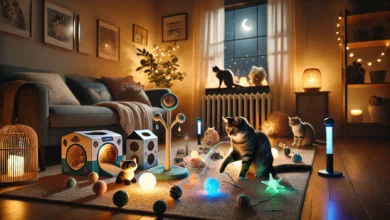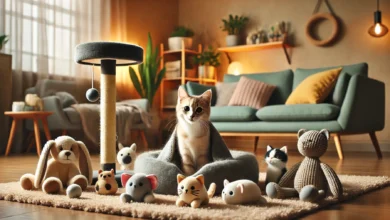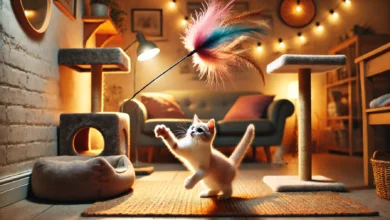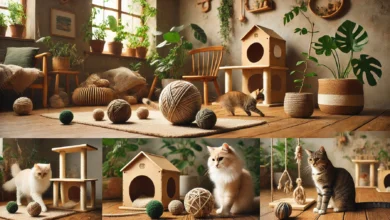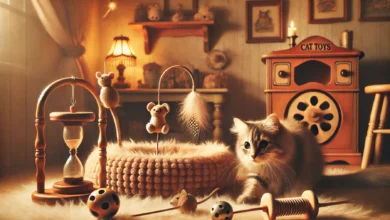The Importance of Cat Trees in Feline Play
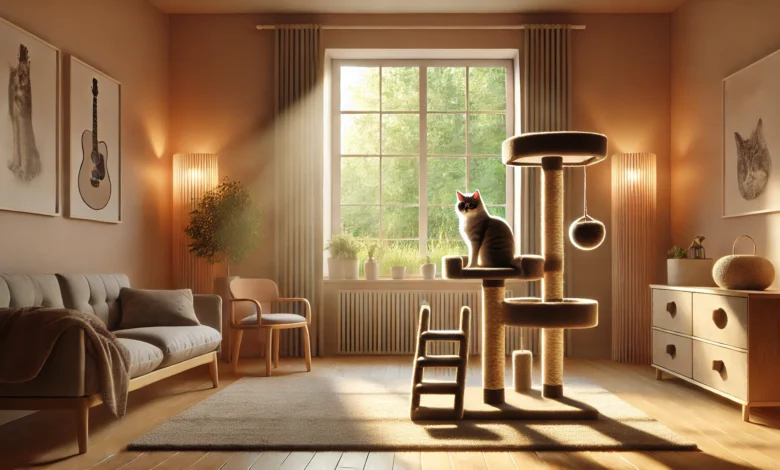
As any cat owner will tell you, cats are not just pets but part of the family, and it is a real joy to see them leap, climb, and generally explore.
It’s important to ensure they have a safe outlet for these inherent behaviors.
This is where a cat tree comes into play.
Whether you have a young, rambunctious kitten or a mature cat, these structures do much more than give them a place to lounge.
They are an essential piece of ‘furniture’ that meets many instinctual needs of your indoor cat.
But why are cat trees so important, and how can they enrich your cat’s life?
Let’s take a look at some of the ways a cat tree can make a difference.
Table of Contents
Why Your Indoor Cat Needs a Cat Tree
While outdoor cats have many ways to exercise their instincts, indoor cats often need assistance to stay physically and mentally stimulated.
A cat tree is ideal for satisfying these needs in a secure and accessible manner.
A cat tree not only provides your cat with a place to perch but also gives them the opportunity to engage in instinctive behaviors like climbing, scratching, and jumping.
A cat tree can save your furniture from being your cat’s ultimate scratching post by giving them a special area to climb and scratch.
These structures cater specifically to feline needs, allowing them to exercise and release energy in a constructive way.
Beyond simply providing a play area, a cat tree satisfies your cat’s deeply wired instinctual urges.
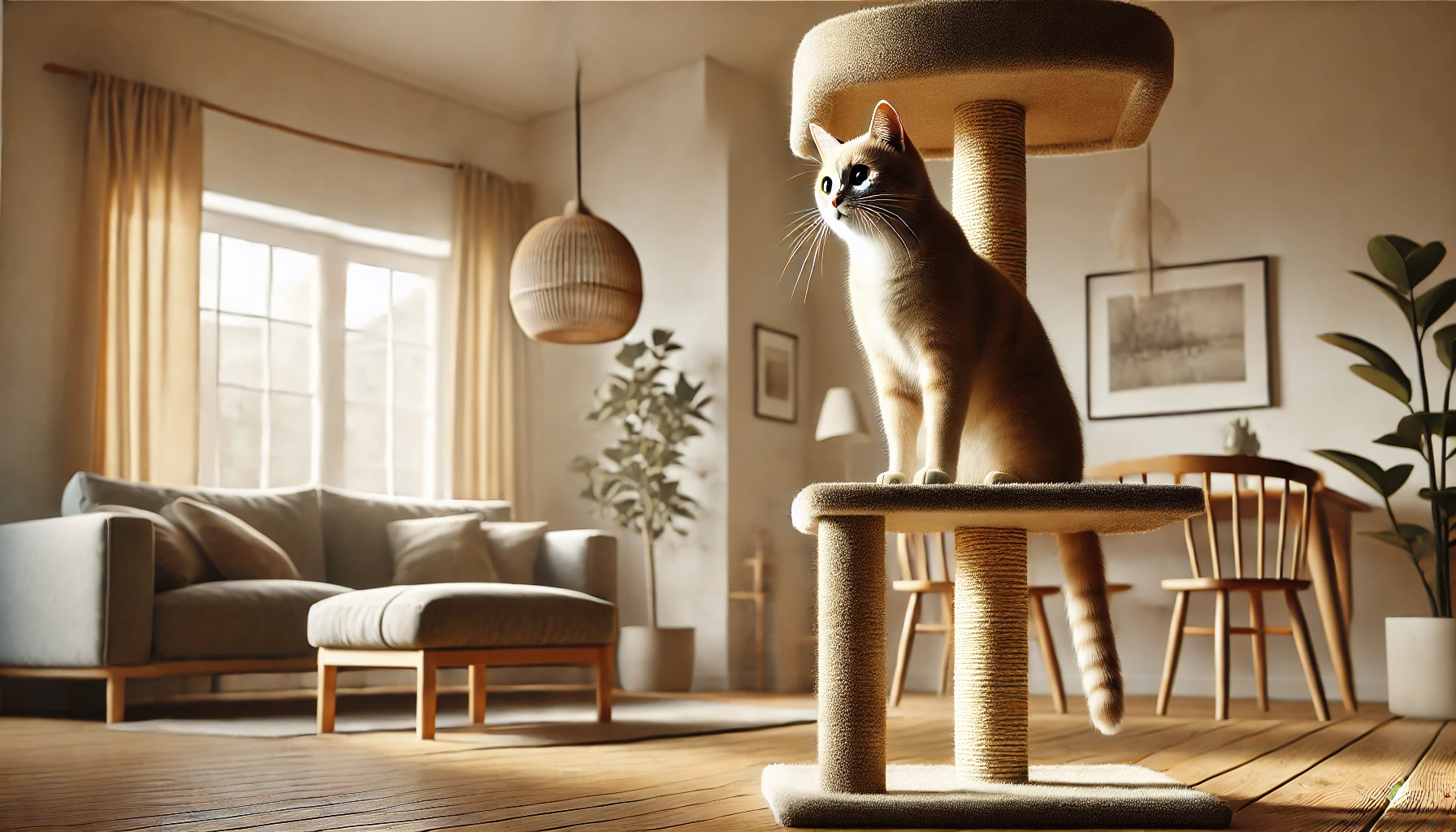
Understanding the Natural Instincts of Cats
Cats are instinctive climbers, hunters, and explorers.
These instincts help them stay safe and find food in the wild.
Indoor cats, though they do not need to hunt or climb for survival, still retain these strong instincts.
A cat tree provides an outlet for your cat to climb and explore, which is crucial for mental stimulation and overall happiness.
This sense of security and the ability to survey their ‘territory‘ from a high perch can reduce anxiety and make your cat feel more at home.
When cats climb, they’re not only indulging an instinct but also building muscles and honing their agility.
For indoor cats who lack outdoor adventures, cat trees offer the physical challenges needed to maintain health and strength.
If your cat often perches on windowsills or shelves, a dedicated cat tree will likely be something they adore.
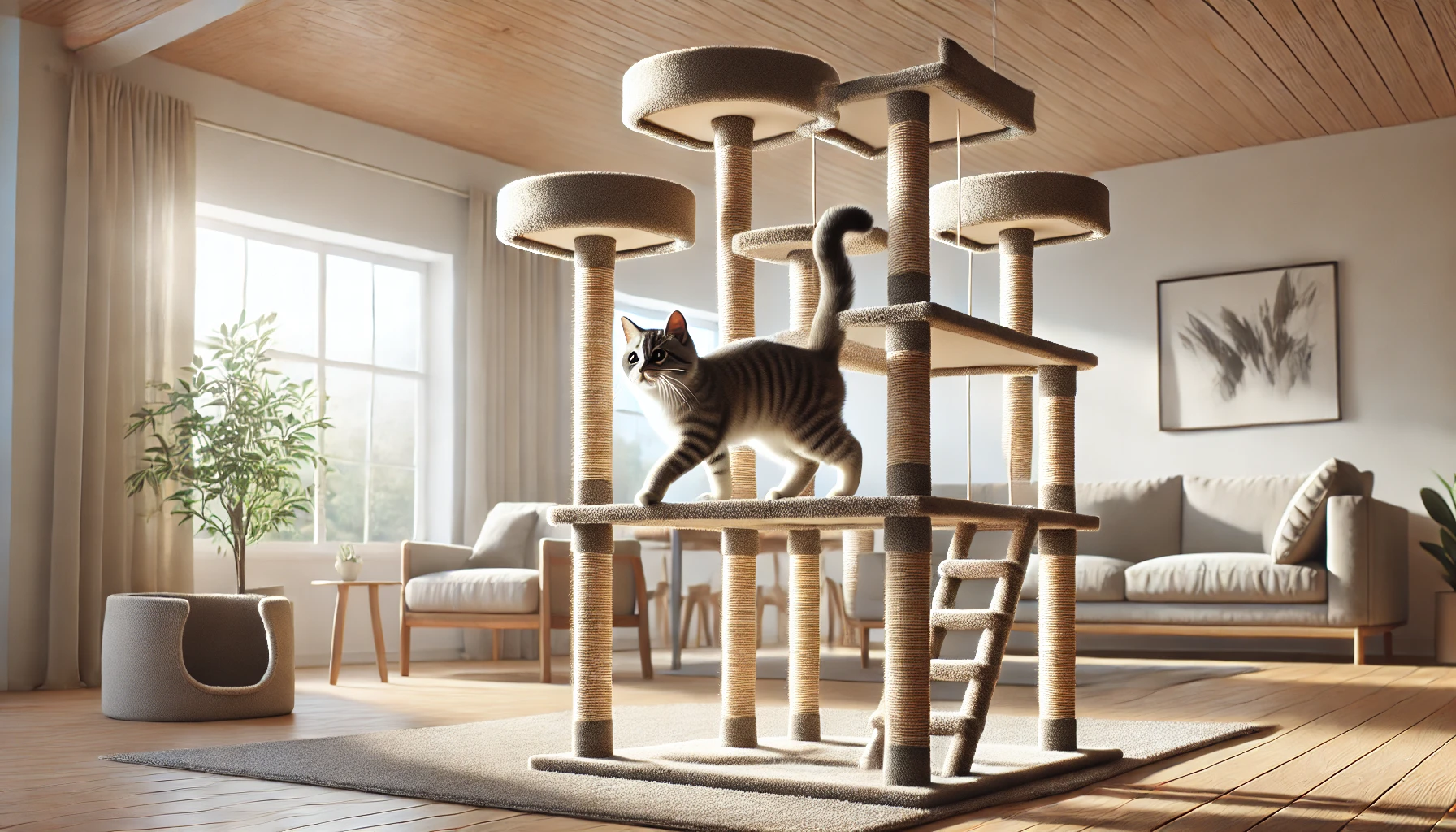
Benefits of Climbing and Exploring for Indoor Cats
Climbing and exploring are essential for maintaining a cat’s physical health.
Like humans, cats need regular exercise to stay in shape, and climbing strengthens their muscles and coordination.
A well-designed cat tree with multiple levels allows your cat to jump, stretch, and explore safely.
A cat tree invites your cat to leap between platforms, scratch posts, and sometimes navigate tunnels or hammocks.
This variety promotes mental stimulation, which is crucial for preventing boredom and related behaviors, like scratching furniture or excessive vocalization.
- Strengthens muscles and improves agility.
- Promotes mental stimulation through exploration.
- Helps prevent boredom and destructive behavior.
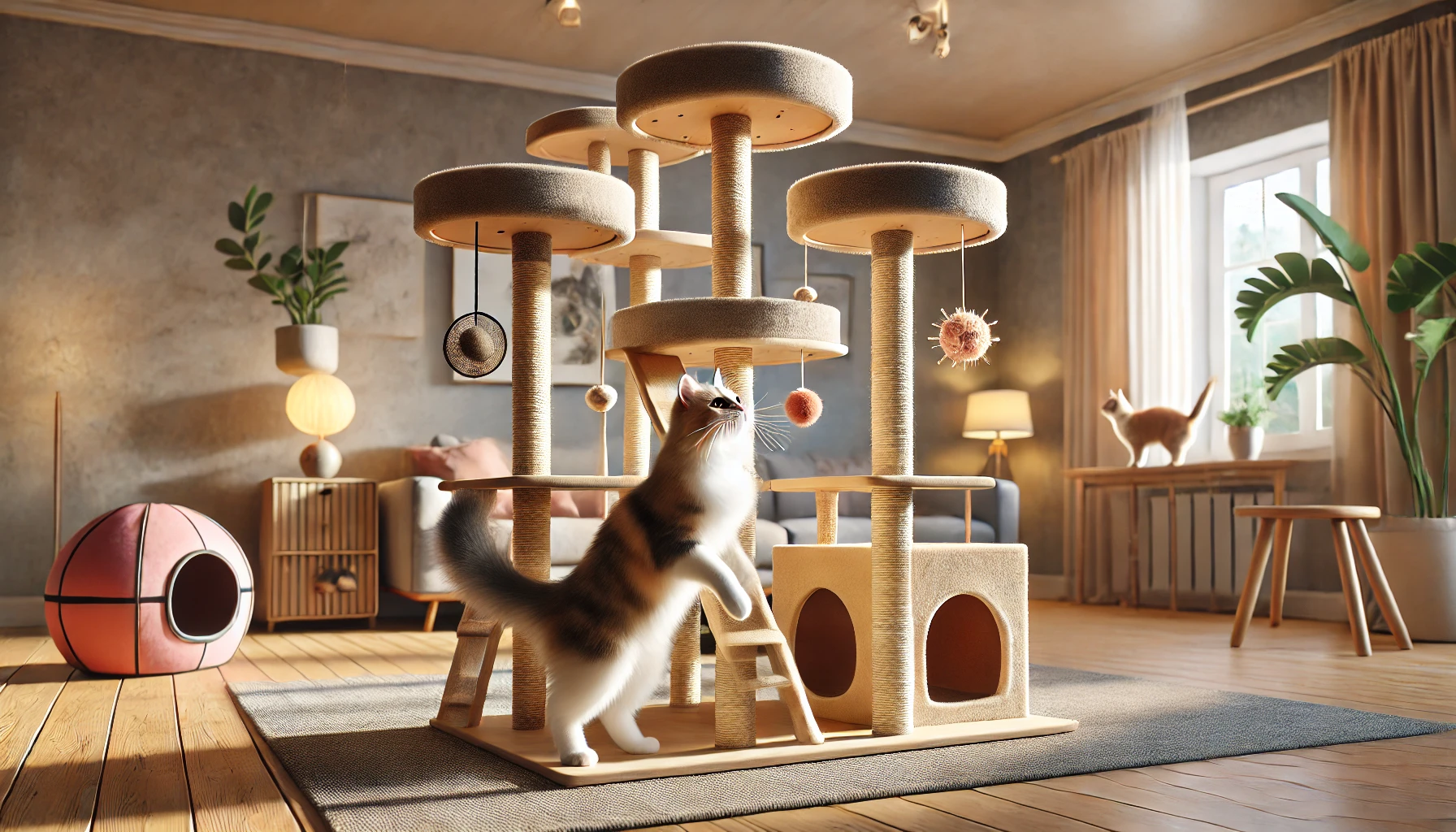
How Cat Trees Satisfy Feline Curiosity and Play Needs
Indoor cats are naturally curious, and without opportunities to explore, they may become bored or anxious.
Cat trees cater to this curiosity by offering multiple levels, hideaways, and textures for investigation.
Each part, from scratching posts to high perches, invites your cat to explore.
Moreover, a cat tree can become an essential part of your cat’s daily exercise routine.
Having a designated space to climb, scratch, and hide keeps them entertained and satisfied, reducing their dependence on your furniture for entertainment.
It’s not only a physical outlet but also a mental one, fulfilling their need for novelty and exploration.
If you’re seeking ways to enrich your indoor cat’s life, a cat tree is an excellent option.
It’s more than just furniture; it’s a tool that helps your cat thrive both physically and mentally within their home environment.
Cat trees are designed to satisfy the innate behaviors of cats, such as climbing, scratching, and jumping, within a safe environment.
- Promotes mental and physical stimulation.
- Redirects scratching behavior away from household furniture.
- Enhances overall well-being by offering a place for exercise and relaxation.
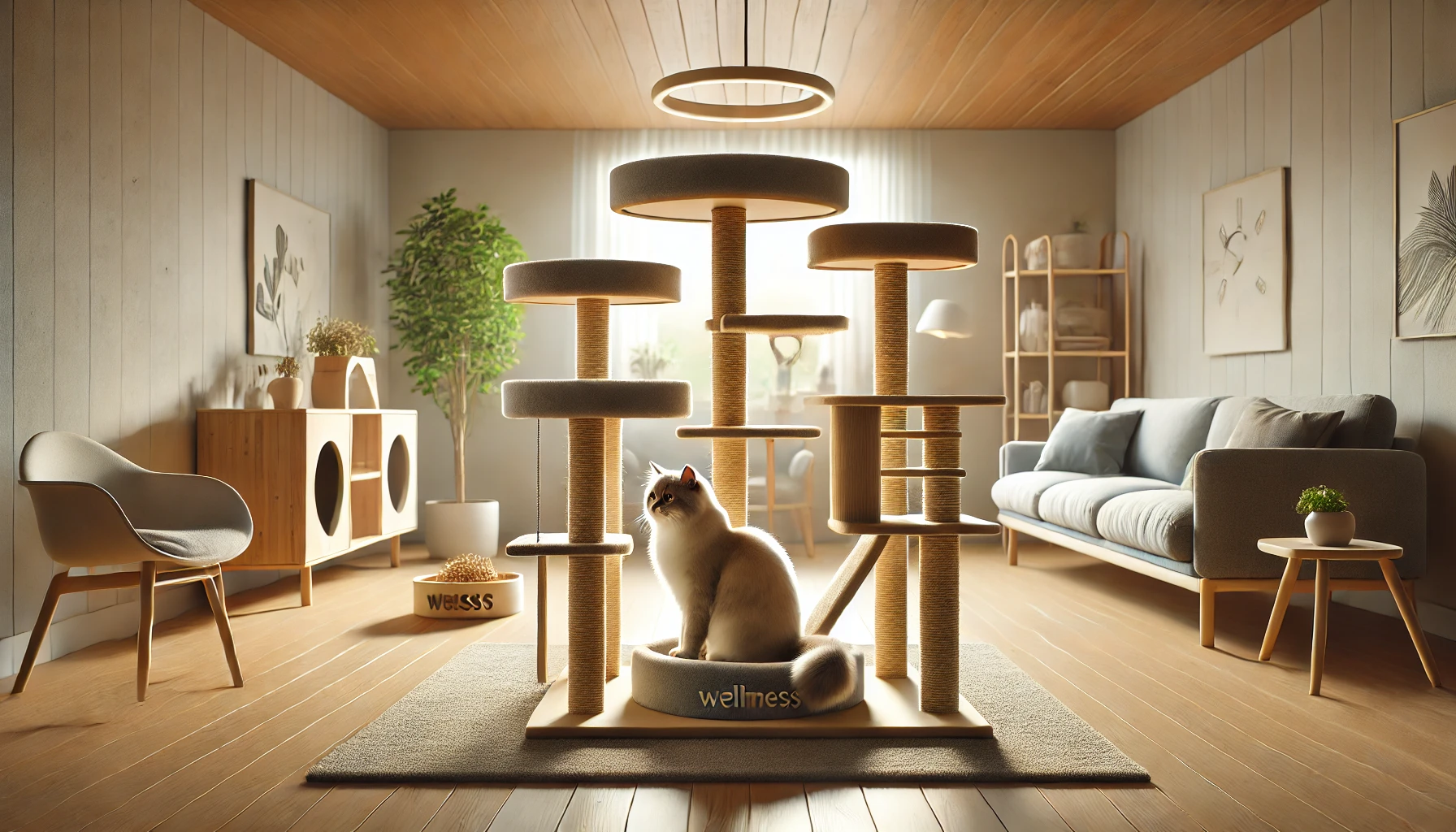
Health and Wellness Benefits of Cat Trees
Cat trees are not just playgrounds for cats; they offer a multitude of health and wellness benefits that can enhance your cat’s quality of life.
Cat trees provide an essential outlet for physical activity and mental stimulation, helping your indoor cat live a healthy lifestyle.
Let’s consider some of the specific health advantages your cat will gain from a cat tree.
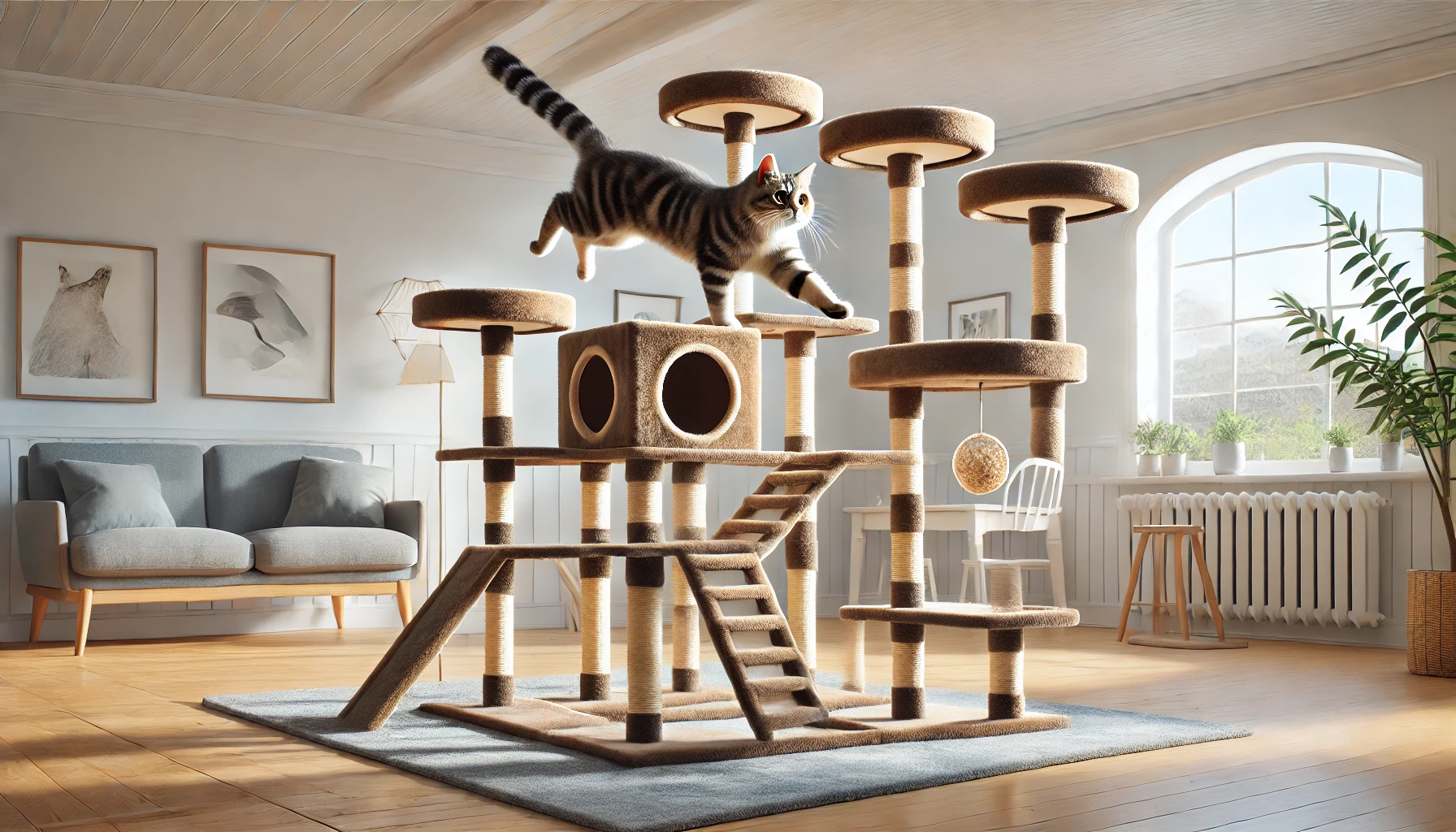
Increasing Physical Activity and Reducing Obesity
Many indoor cats are often inactive, gain weight, and develop health problems due to a lack of physical activity.
Without the physical challenges of the outdoors, many indoor cats find it challenging to stay active.
A cat tree encourages movement by providing multiple platforms for your cat to jump, climb, and explore.
These physical activities help keep your cat’s muscles toned, improve coordination, and assist in managing weight.
Regular use of a cat tree can help reduce the risk of obesity, which is linked to several health issues in cats, including diabetes, joint problems, and cardiovascular diseases.
By encouraging your cat to climb and play on a cat tree, you can help prevent these issues, promoting a longer and healthier life for your furry friend.
- Helps manage weight through regular exercise.
- Improves coordination and muscle tone with climbing.
- Reduces the risk of obesity-related conditions, like diabetes.
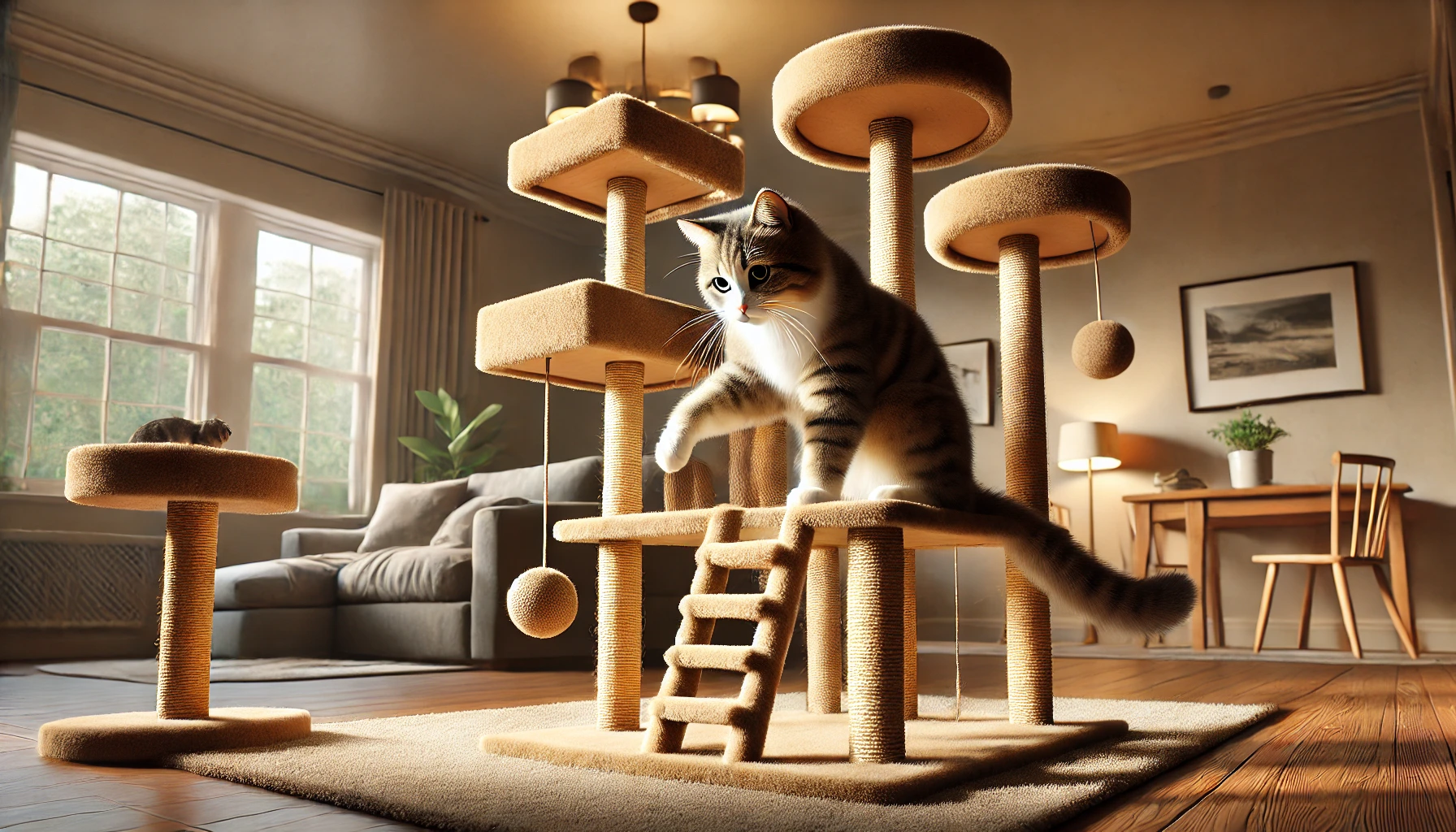
Mental Stimulation Through Climbing and Scratching
Just like other animals, including humans, cats need mental stimulation to stay happy and avoid boredom.
A cat tree provides a variety of challenges and textures that engage your cat’s mind, keeping them busy and mentally stimulated.
Different cat trees often feature multi-level platforms, scratching posts, and cubby holes that encourage your cat to explore and investigate, fulfilling their instinct to explore new things in their surroundings.
Mental stimulation can help prevent behavioral issues, such as destructive scratching, excessive meowing, and general anxiety.
A cat tree naturally channels these behaviors while nurturing your cat to be calm and focused, reducing stress and helping them feel secure in their environment.
- Provides varied textures and levels for sensory engagement.
- Prevents boredom and related unwanted behaviors.
- Reduces stress and anxiety, promoting relaxation.
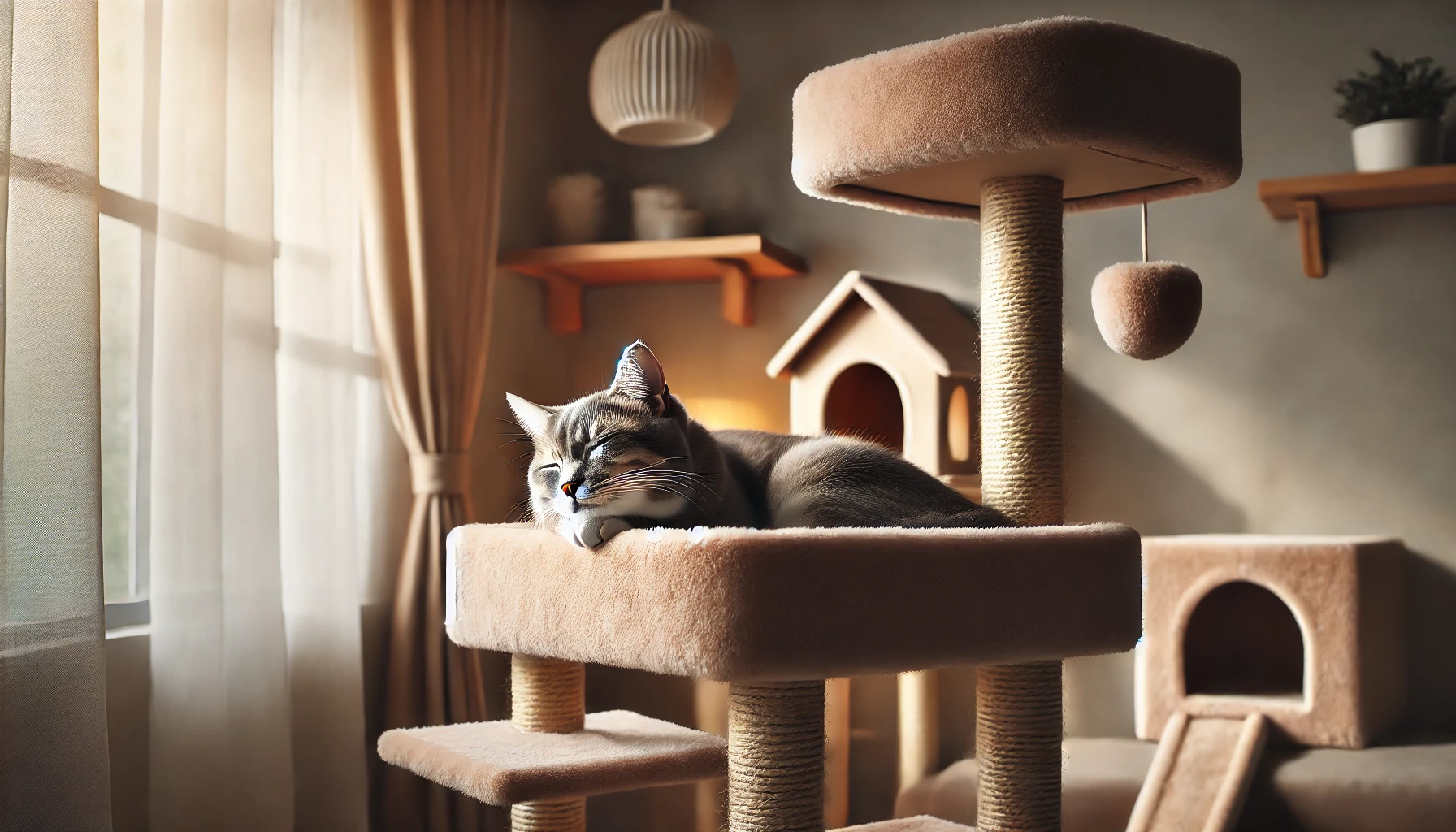
How Cat Trees Help in Reducing Stress and Anxiety
Indoor cats may develop stress or anxiety due to limited space and lack of environmental stimulation.
A cat tree offers a personal, secluded space where your cat can retreat when feeling overwhelmed.
With its elevated perches and enclosed cubbies, it provides a haven of relaxation, helping your cat feel more in control of their environment.
Having a designated space where they can observe their surroundings from a secure height helps cats feel more confident, especially if they share their home with other pets or children.
This reduction in stress positively impacts their immune system, leading to fewer behavioral issues and creating a happier, well-adjusted cat.
By investing in a cat tree, you’re providing your feline friend with not only a fun place to play but also a boost to their physical and mental well-being.
With benefits ranging from weight management to stress relief, cat trees are a worthwhile investment in any home that includes an indoor cat.
Cat trees are not just playgrounds; they support both physical and mental health for indoor cats.
- Promotes weight management and reduces obesity risks.
- Offers mental stimulation through climbing and scratching.
- Encourages healthy behavior by providing an outlet for energy and curiosity.
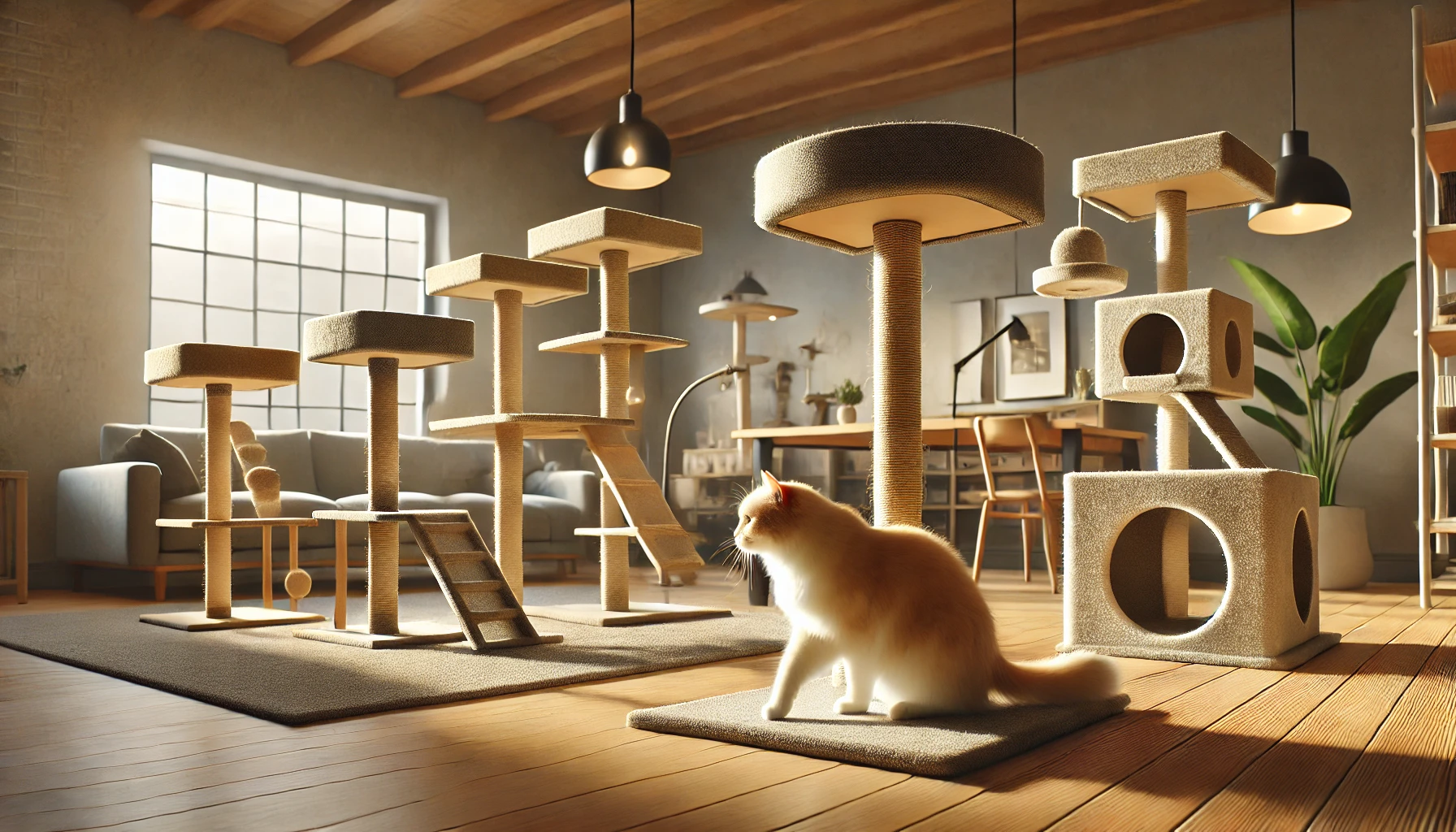
Choosing the Right Cat Tree for Your Feline Friend
Choosing the right cat tree for your feline friend can make all the difference in their comfort, enjoyment, and overall well-being.
Not all cat trees are created equal, so finding one that suits your cat’s needs, personality, and activity level is essential.
Here are some things to consider when trying to find the perfect cat tree for your kitty.
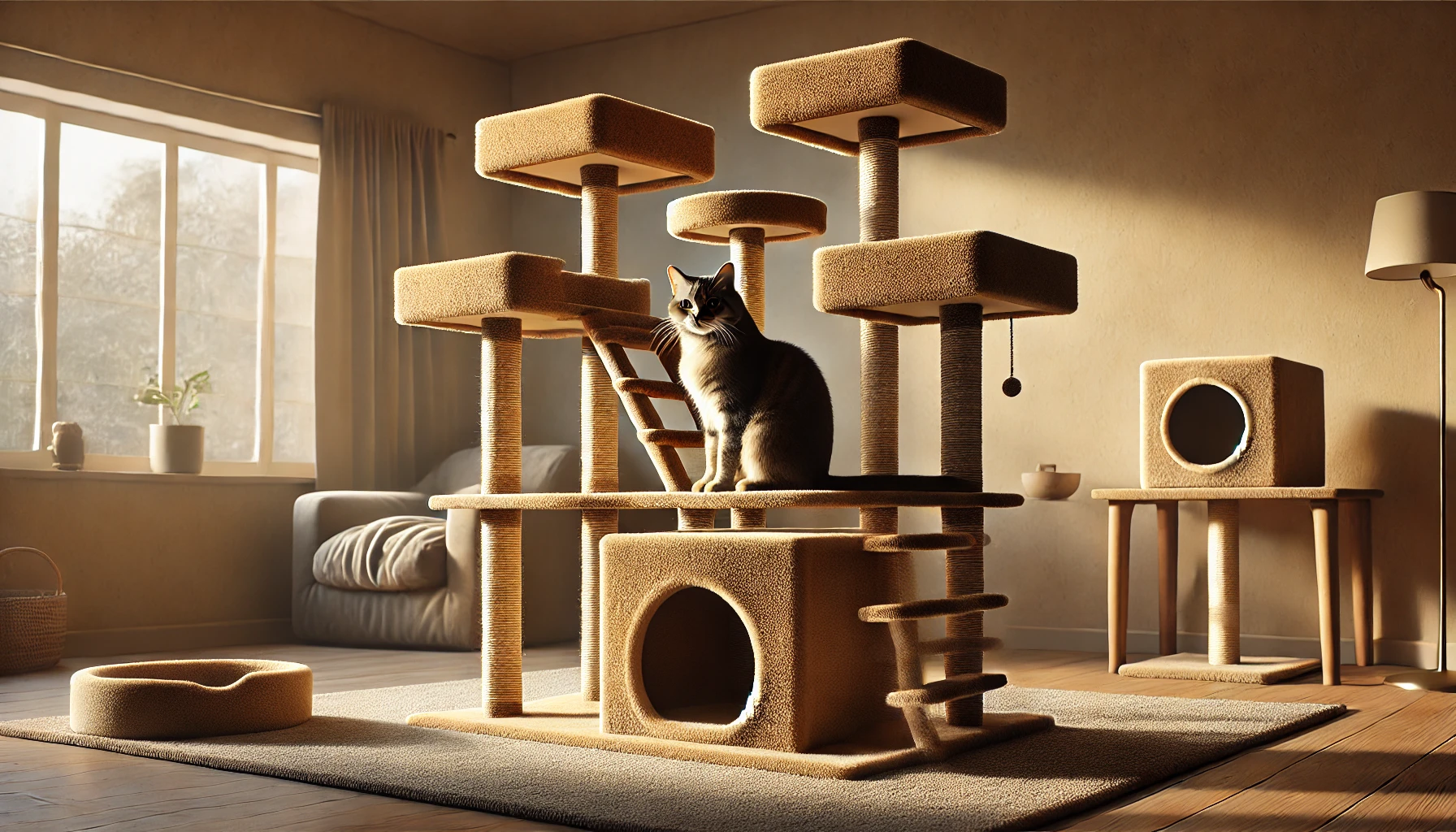
Considerations: Size, Material, and Stability
When selecting a cat tree, consider both your space and your cat’s specific needs.
A small apartment may only allow a compact design, while a larger space can accommodate a taller and more elaborate cat tree.
The height of the tree can give your cat a sense of control over their environment, which they often enjoy.
The material and stability of the cat tree are also very important for both safety and comfort.
Look for durable materials like wood or reinforced cardboard that can handle active climbing and scratching.
Stability is especially crucial if you have a large cat or multiple cats, as a wobbly cat tree is likely to be avoided.
- Size: Choose a tree that fits your space and provides enough room for your cat’s comfort.
- Material: Opt for durable materials like wood or reinforced cardboard.
- Stability: Ensure the tree has a stable base to prevent wobbling, especially for larger cats.
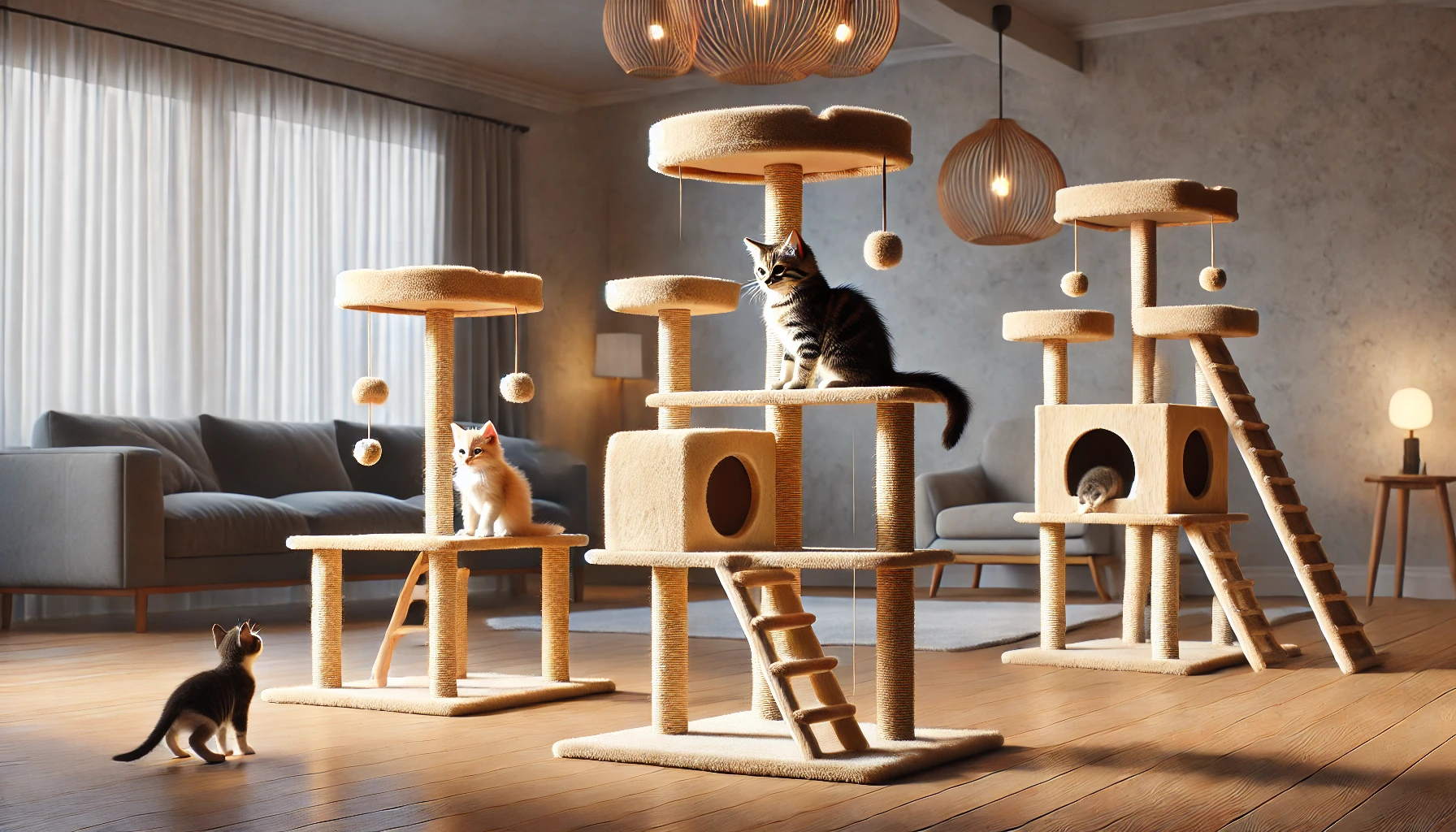
Best Cat Tree Types for Kittens vs. Adult Cats
Different ages and energy levels call for different types of cat trees.
Kittens, for example, may benefit from smaller, accessible structures with multiple platforms for safe playtime.
Consider a cat tree with lower heights and gentle inclines to make it easy and safe for your kitten to climb.
For adult cats, especially larger or heavier breeds, a sturdier and taller cat tree may be more suitable.
Adult cats enjoy higher perches where they can rest and survey their surroundings.
Many adult cats also appreciate scratching posts integrated into the cat tree to keep their claws healthy and satisfy their natural scratching instincts.
- Kittens: Choose lower heights with multiple safe platforms.
- Adult Cats: Opt for taller, sturdier trees with high perches.
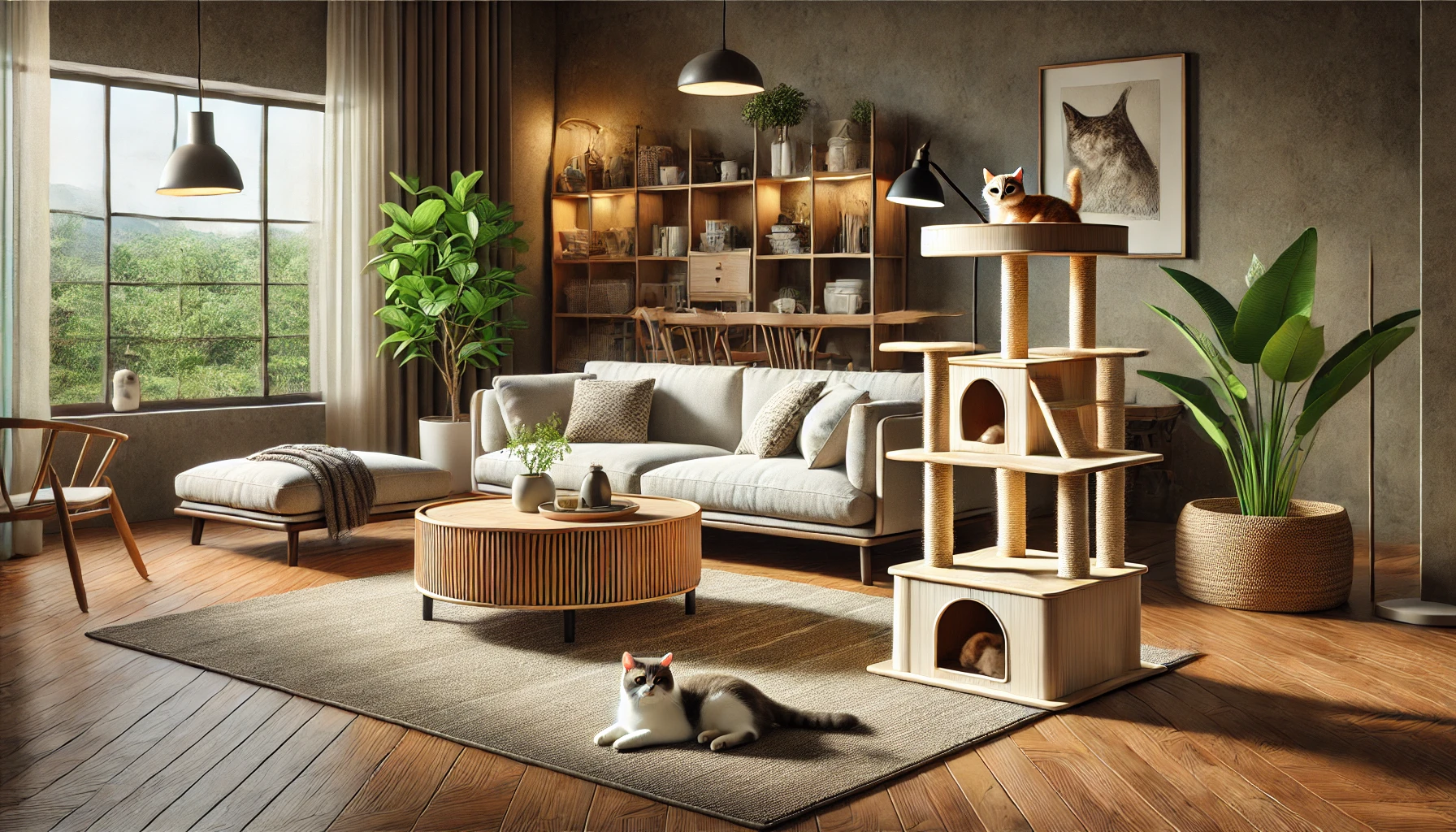
Integrating Cat Trees with Other Furniture for Cat Comfort
Incorporating a cat tree into your living space can enhance your cat’s comfort and make them feel at home.
Placing the cat tree near a window allows your cat to enjoy natural light and observe the outside world, which is especially stimulating for indoor cats.
Positioning it in a spot where they can see the entire room helps them feel more secure.
Additionally, blending the cat tree with other furniture makes it more aesthetically pleasing.
Many modern cat trees are designed to look like stylish furniture, allowing you to maintain your home’s decor while providing your cat with a designated space for climbing, scratching, and relaxing.
- Place near a window for natural light and outdoor views.
- Position for optimal room visibility to help your cat feel secure.
- Choose designs that complement your home decor for aesthetic appeal.
Selecting the right cat tree means understanding your cat’s needs and how to incorporate those needs into your living space.
By making the right choice, you can provide your cat with a fun, safe, and enriching environment that keeps them happy and healthy.
When choosing a cat tree, consider your cat’s age, size, and personality to find the best fit.
- Opt for materials that are durable and stable.
- Ensure the height is appropriate for your cat’s comfort.
- Choose a tree that matches your home space and décor.
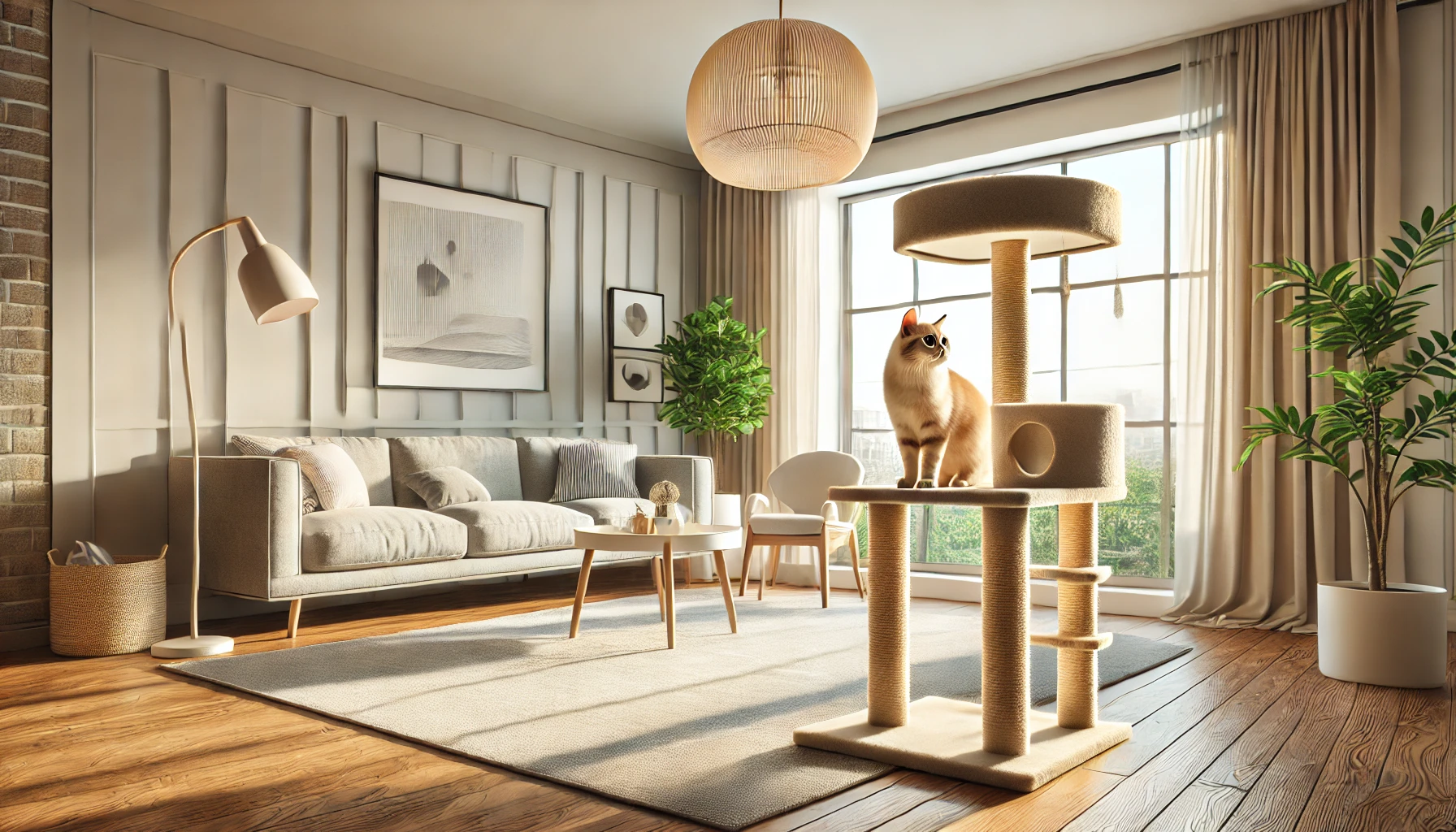
How to Place a Cat Tree for Optimal Use
Once you have found the perfect cat tree for your kitty, the placement in your home is crucial to ensure that your cat will use it comfortably.
Proper placement makes the cat tree more appealing and goes a long way in helping them feel secure and stimulated.
Here are some placement tips to help maximize this new favorite spot for your kitty.
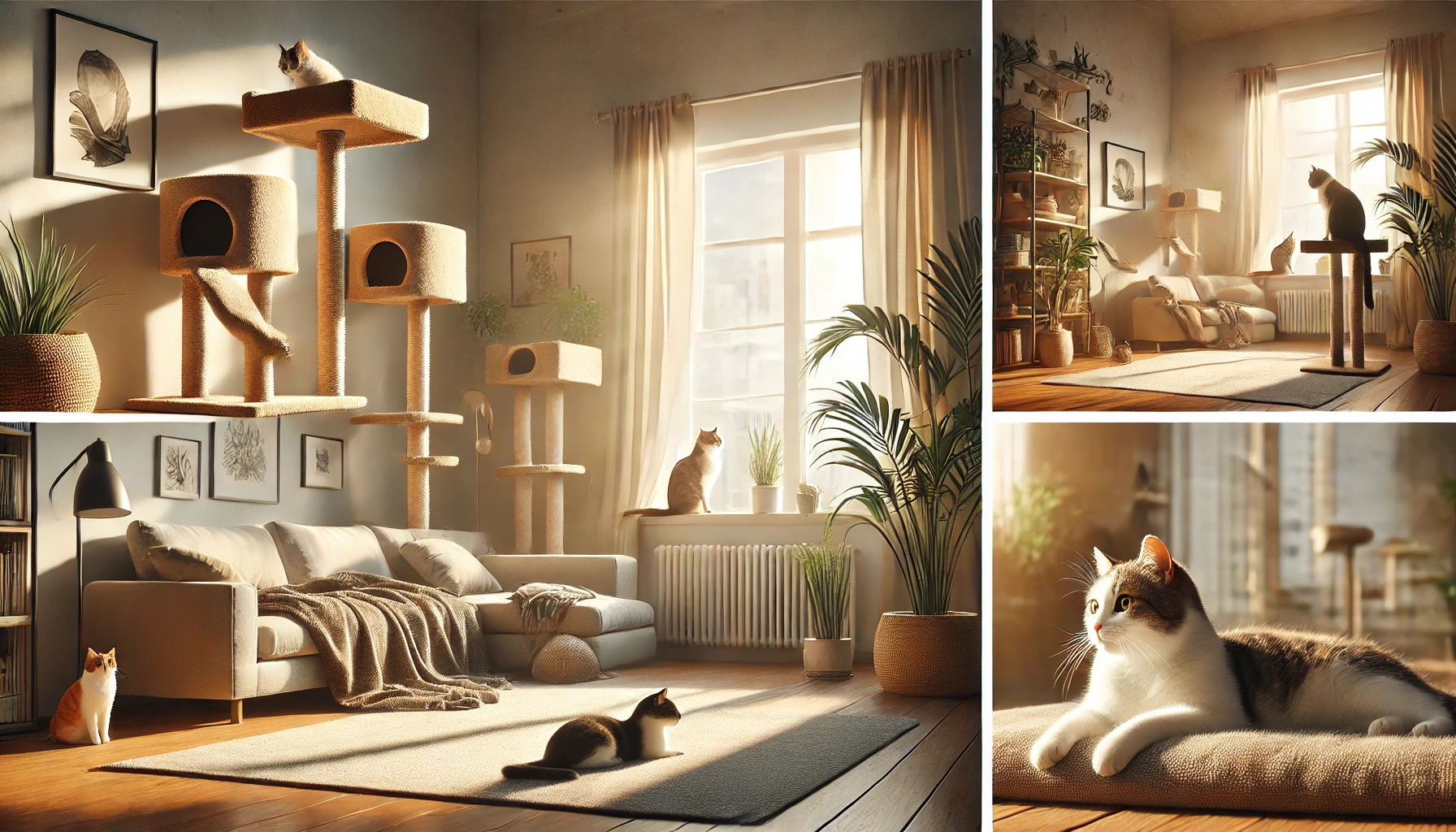
Places Where Your Cat Would Most Likely Want to Be
Selecting the right location for the cat tree can encourage your cat to explore and get excited about it.
Place it near a window where your cat can see outdoors, enjoy visual stimulation, and feel connected to the outside world.
Birds flying, passing cars, or other outdoor views can keep your cat entertained and help alleviate boredom.
If your cat likes to be near you, consider placing the cat tree in a family room or an area where you spend time with family.
This way, your cat has their own space but can still feel included in household activities.
- Near windows for natural light and outdoor views.
- In family rooms or common areas to foster a sense of inclusion.
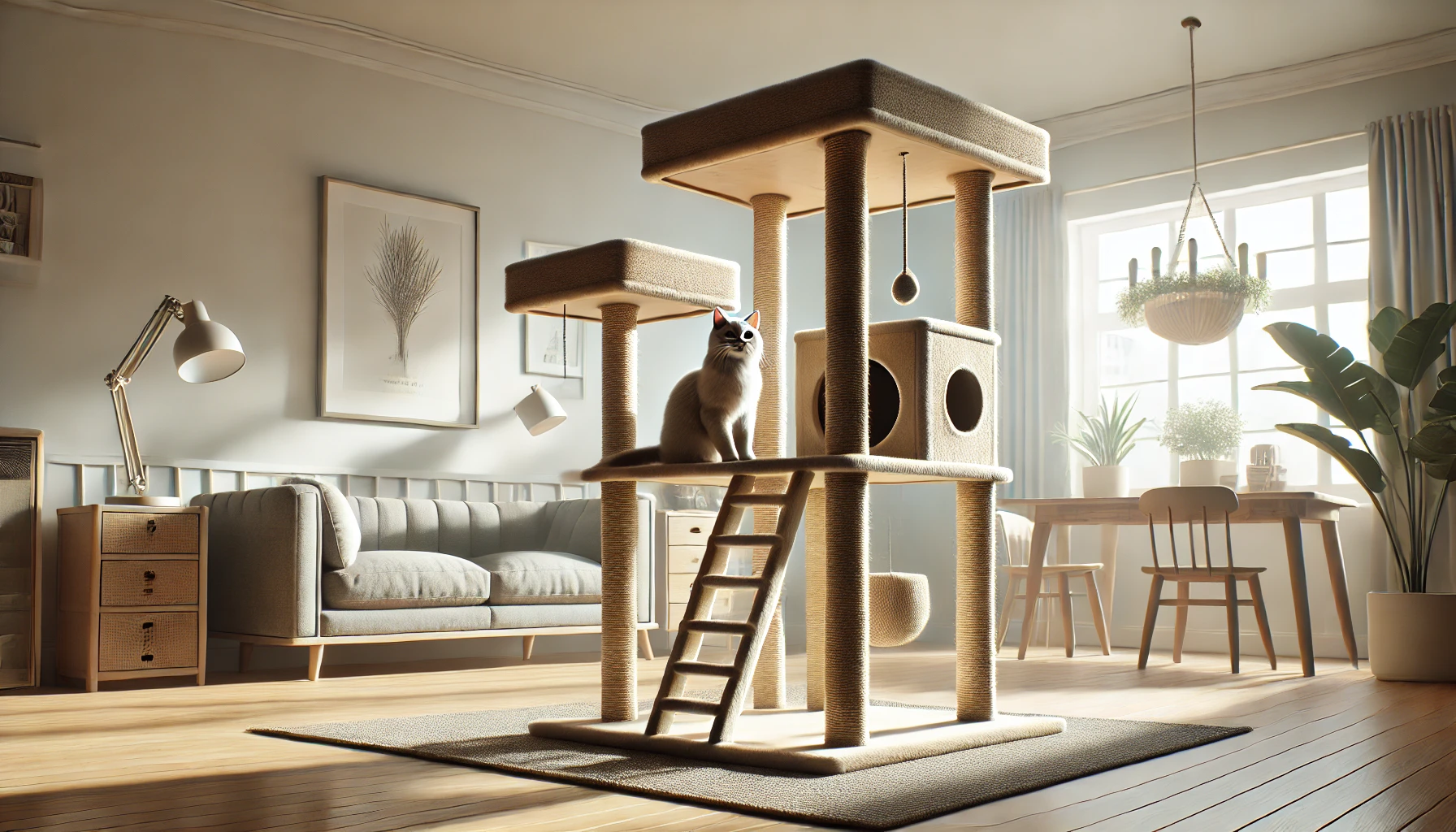
Safety and Stability of Cat Trees
For a cat tree to be both appealing and safe, it must be stable and securely positioned.
A shaky or unstable cat tree can make cats wary, causing them to avoid using the structure.
Place the tree on a flat, even surface and, if possible, secure it to the wall for added stability, especially if you have multiple cats or an active cat.
If you have a large cat or a multi-cat household, choose a cat tree with a heavy base or look for options that allow you to anchor it.
Avoid placing the cat tree near furniture or decorations that could get knocked over if your cat makes an enthusiastic leap.
- Place on a flat, even surface to prevent wobbling.
- Anchor to the wall if necessary, particularly in multi-cat homes.
- Keep away from fragile furniture or decorations.
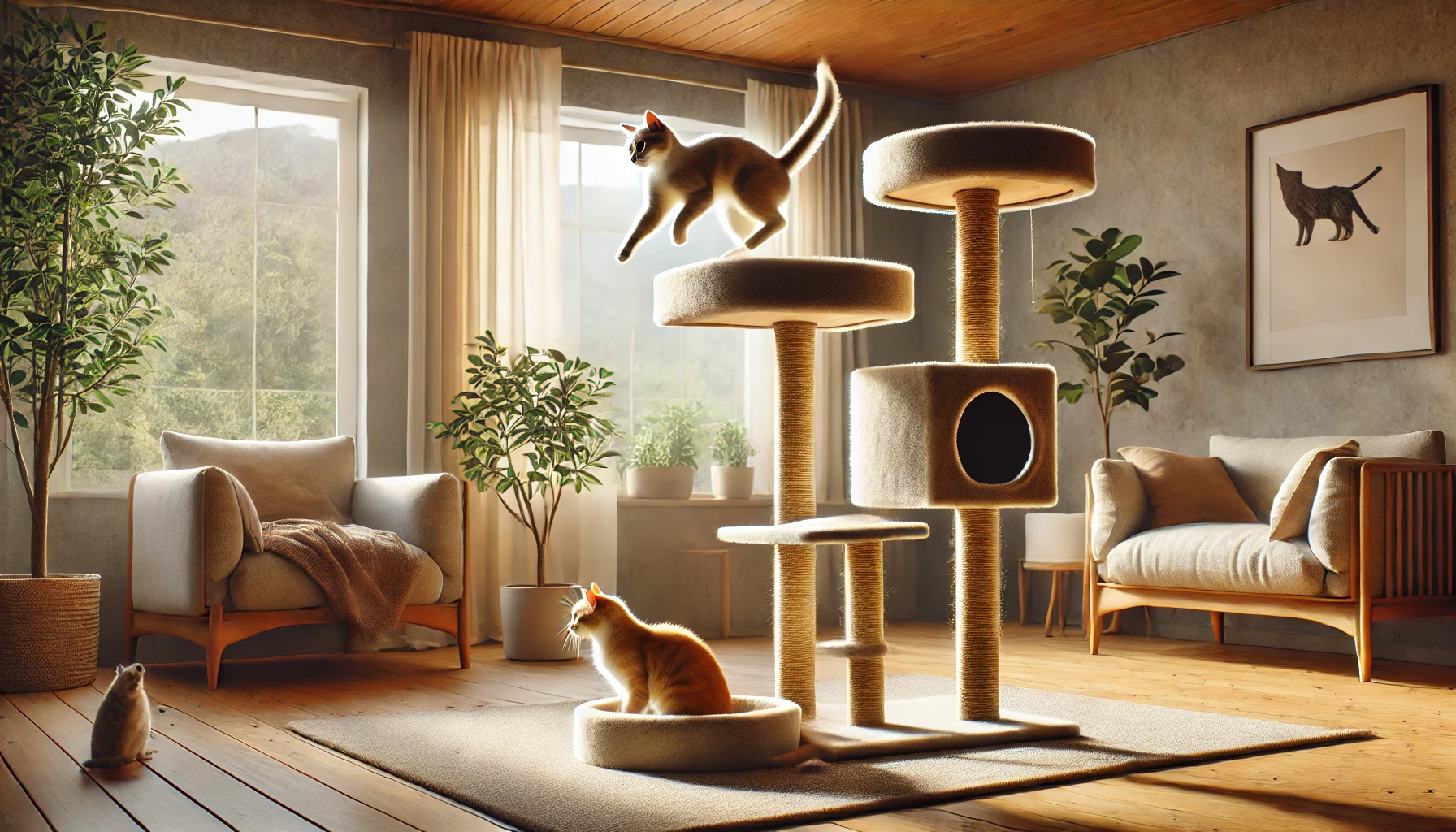
How Placement Affects Play and Relaxation
Placing the cat tree in the right spot can help balance your cat’s play and relaxation needs.
For active play, position it in an area with enough space around it so your cat can jump on and off comfortably.
Avoid placing the cat tree in high-traffic areas where too much noise or activity might cause stress and discourage use.
If your cat prefers relaxation, consider quieter areas of the house where they can feel safe and secure.
For cats who like to alternate between rest and play, a spot near a cozy corner with a good view of the room can provide comfort while allowing them to feel involved in the household.
- Choose a spacious area for active play and jumping.
- Avoid high-traffic or noisy areas to minimize stress.
- Consider quieter corners for cats that enjoy relaxing.
Mindfully selecting the location of your cat tree can make it an inviting, safe, and interesting environment for your cat.
A well-thought-out setup allows your cat to maximize the use of their cat tree for play, relaxation, and both physical and mental stimulation.
Proper placement is key to ensuring your cat enjoys their cat tree to the fullest.
- Position near windows for natural light and outdoor stimulation.
- Choose family areas if your cat likes to stay close to you.
- Keep away from high-traffic or noisy areas to reduce stress.
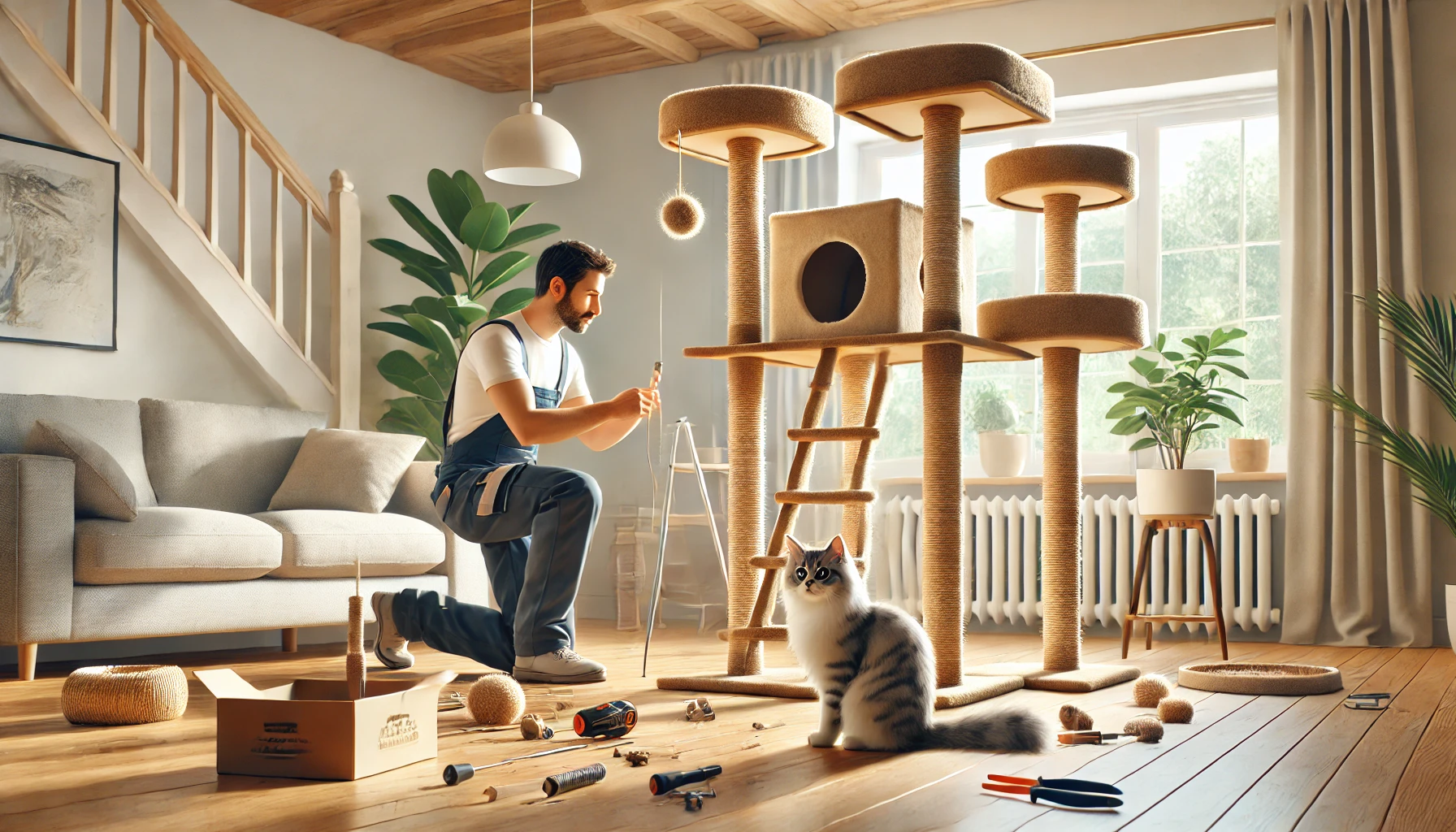
How to Maintain and Upgrade Your Cat Tree
A cat tree is an excellent addition to any cat-friendly home, but like all furniture, it requires regular care and maintenance.
Keeping it clean, sturdy, and interesting will ensure that your cat’s cat tree remains a safe and stimulating place.
Here are some tips to maintain and upgrade your cat tree to keep it fun and durable.
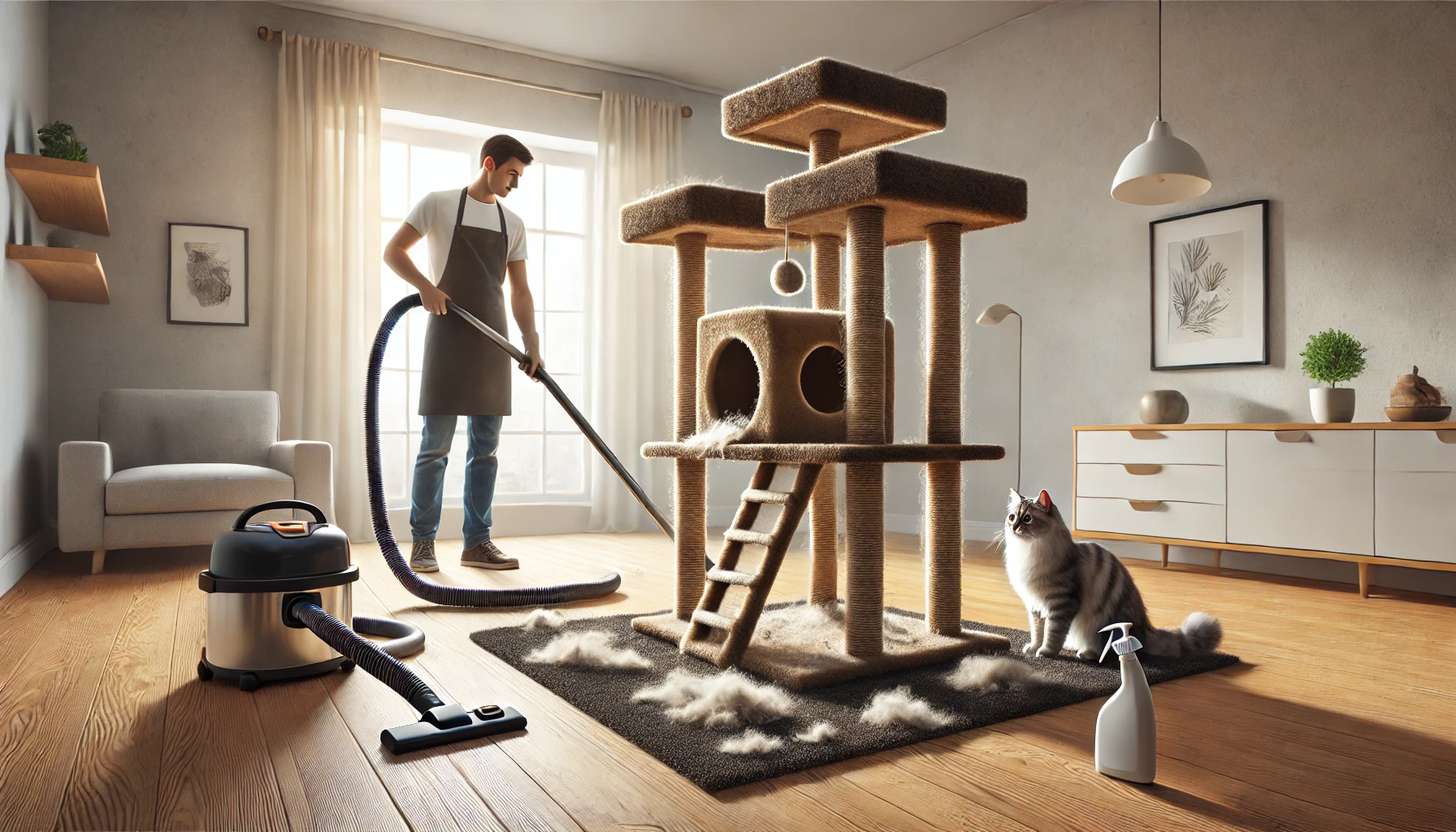
Regular Cleaning and Maintenance Tips
Over time, a cat tree can accumulate fur, dirt, and even develop odors.
Regular cleaning not only keeps the environment hygienic but also maintains the tree’s freshness.
Use a vacuum with an upholstery attachment on all surfaces to pick up loose fur and debris.
For deeper cleaning, a pet-safe disinfectant or a mild detergent with water can be used to clean platforms, scratching posts, and cubbies.
Check for signs of wear, such as loose screws, frayed ropes, or torn carpet.
Tightening any loose parts will keep the tree stable, and replacing worn-out scratching posts or carpeted areas ensures your cat’s safety and continued interest in the cat tree.
- Regular vacuuming to remove fur and dust.
- Use pet-safe cleaners for deep cleaning.
- Inspect for loose screws and worn areas.
- Replace frayed ropes and damaged scratching posts.
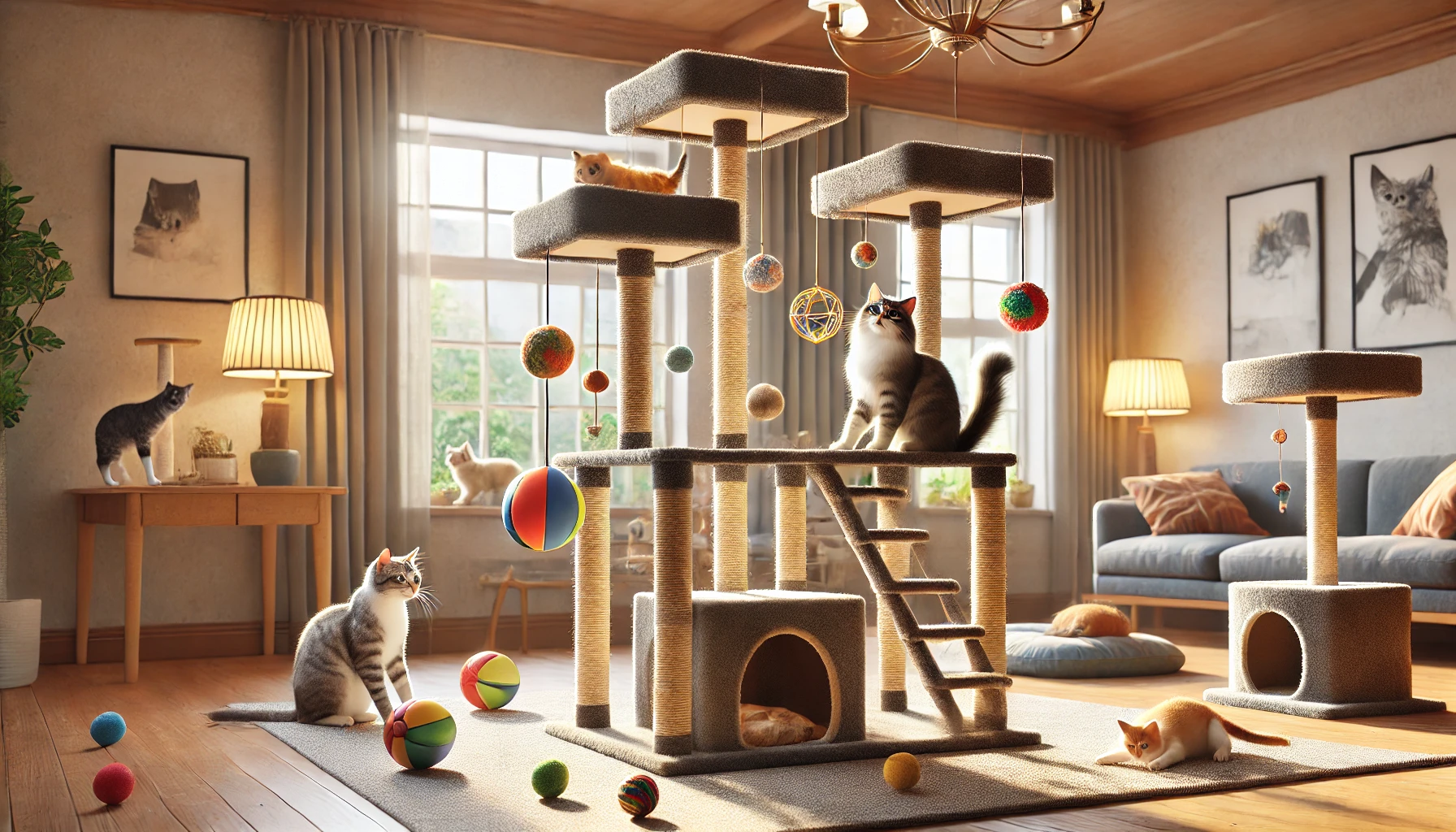
Adding Accessories to Keep Cats Interested
To keep the cat tree exciting, consider adding accessories that spark your cat’s natural curiosity.
Hanging toys like balls or feathers can provide great entertainment.
Rotating toys occasionally adds novelty, keeping your cat engaged and interested in their cat tree.
You can also add small pillows or blankets on the platforms to make resting areas more inviting.
If your cat tree includes tunnels or hideaways, placing a soft cushion inside creates a cozy retreat where your cat can curl up and nap comfortably.
- Add hanging toys, like balls or feathers, for play.
- Rotate toys occasionally to keep things fresh.
- Place small pillows or blankets on resting platforms.
- Add cushions in hideaways to create a cozy retreat.
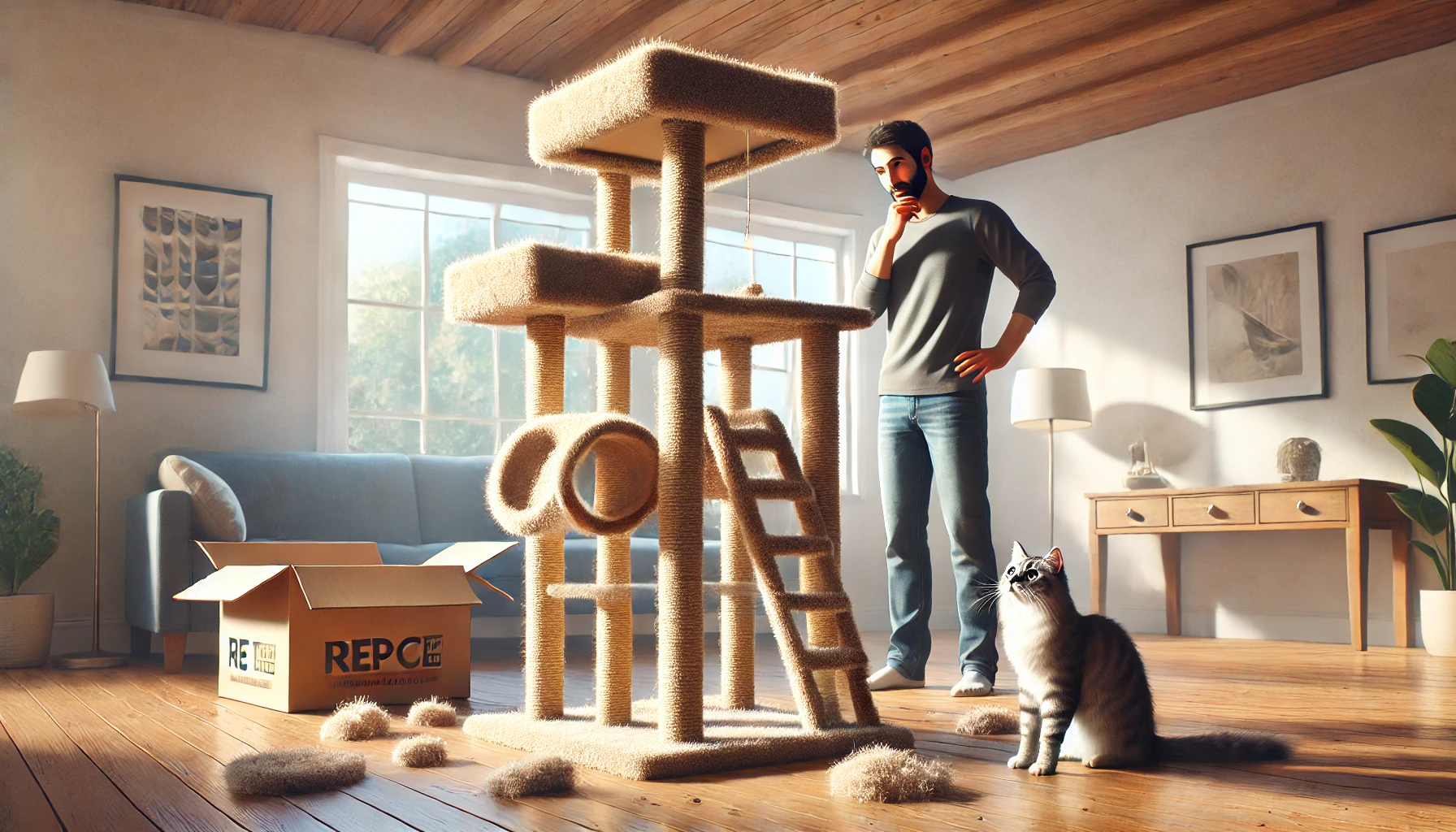
When and How to Replace Worn-Out Cat Trees
Even with regular maintenance, cat trees will eventually show wear that can’t be fixed with simple repairs.
If the structure becomes wobbly, the materials are highly frayed, or the posts are too worn for effective scratching, it may be time to replace the cat tree.
Consider your cat’s current preferences when choosing a replacement.
For example, if your cat favors high platforms or specific types of scratching posts, look for similar features in a new cat tree.
Replacing an old cat tree not only ensures safety but also provides a refreshed environment that keeps your cat stimulated and happy.
- Replace when the structure becomes unstable or badly worn.
- Consider your cat’s favorite features when selecting a new cat tree.
- Opt for a cat tree with improved durability if possible.
With regular cleaning, thoughtful enhancements, and timely replacements, your cat tree can remain a beloved and safe space for your cat.
Keeping it in top shape will ensure not only hygiene and safety but also continued enjoyment and benefit for your cat over the years.
Maintaining a cat tree ensures safety, hygiene, and sustained interest.
- Regular vacuuming keeps it clean.
- Inspect and tighten screws as needed.
- Replace worn parts to keep the tree engaging.
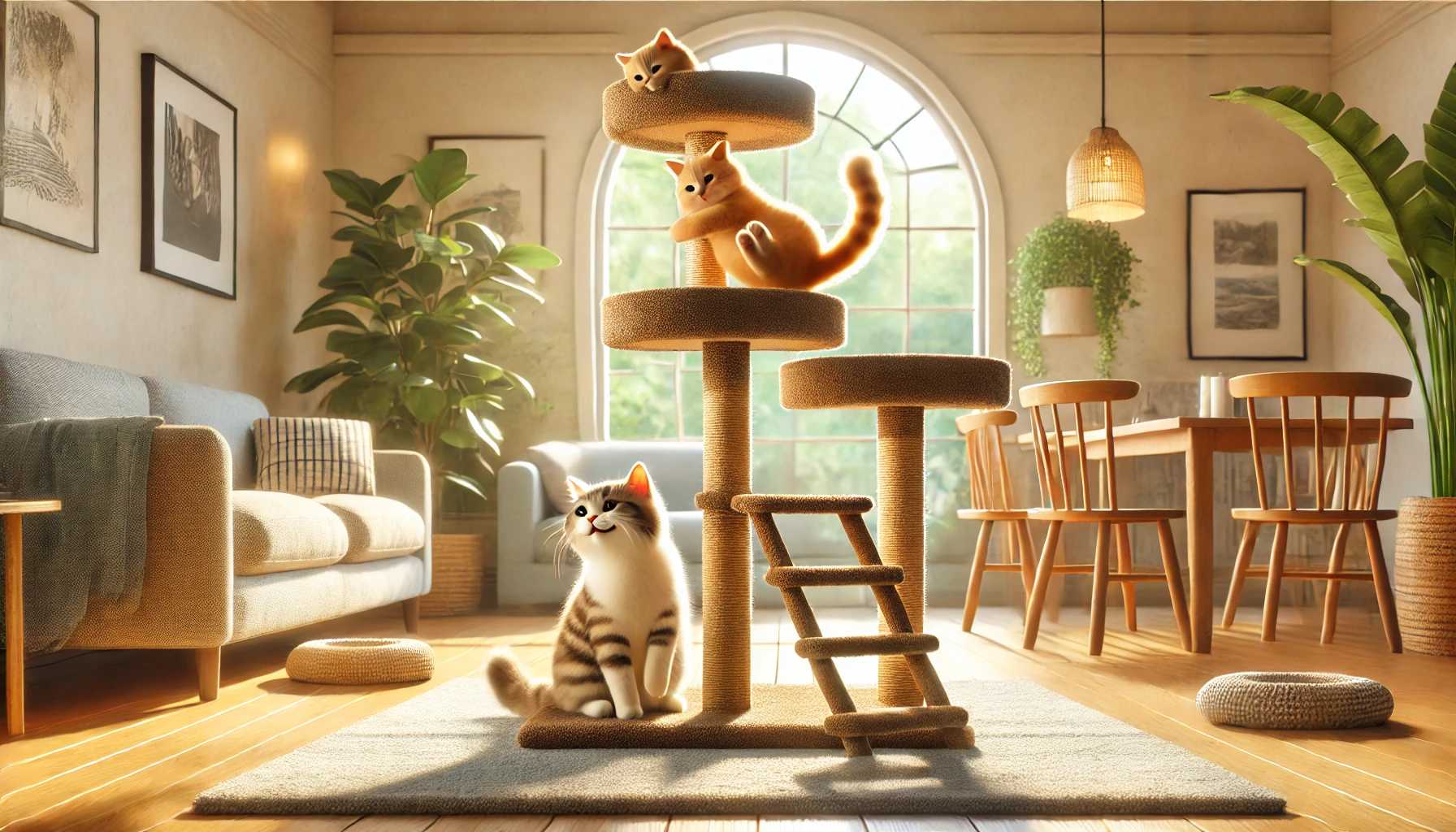
The Impact of Cat Trees on Your Cat’s Life
One of the best ways to enrich your cat’s indoor life is to add a cat tree to your home.
From satisfying natural instincts to supporting both physical and mental health, a cat tree offers much more than simply being a place where your cat can perch.
Throughout this article, we have discussed why indoor cats need cat trees, how these trees improve the life of a cat, how to choose the best tree for your feline companion, and how to maintain and place it.
Let’s go through some key points again to help you take full advantage of the benefits a cat tree has in store for your kitty.
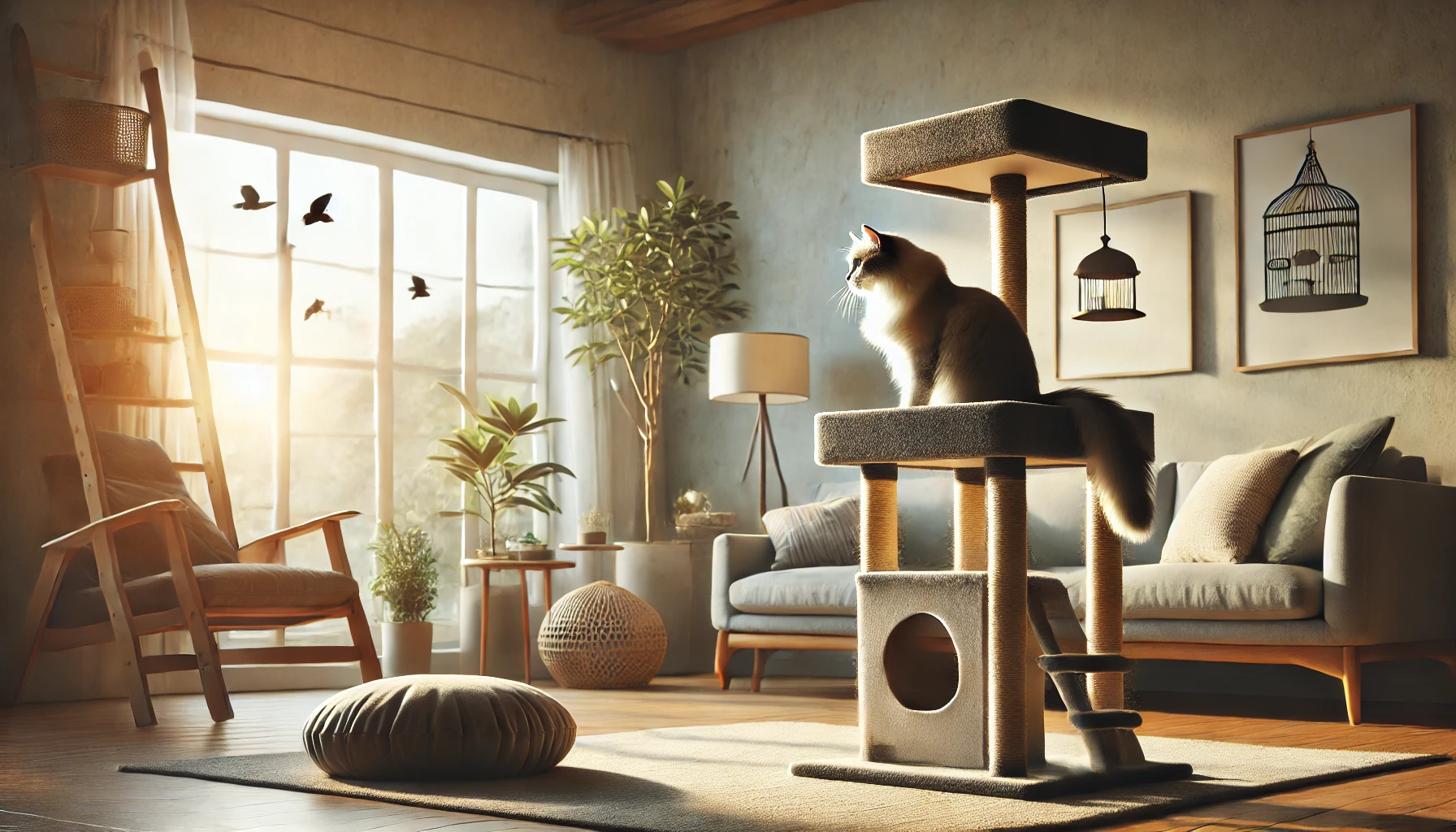
Encouraging Natural Instincts and Reducing Anxiety
Cat trees allow your cat to express their natural instincts safely, giving them opportunities to climb, scratch, and explore.
These instincts are essential for helping a cat feel secure and mentally balanced.
By providing your cat with a designated area to exercise these behaviors, you minimize anxiety and prevent problematic behaviors that might arise from frustration or stress.
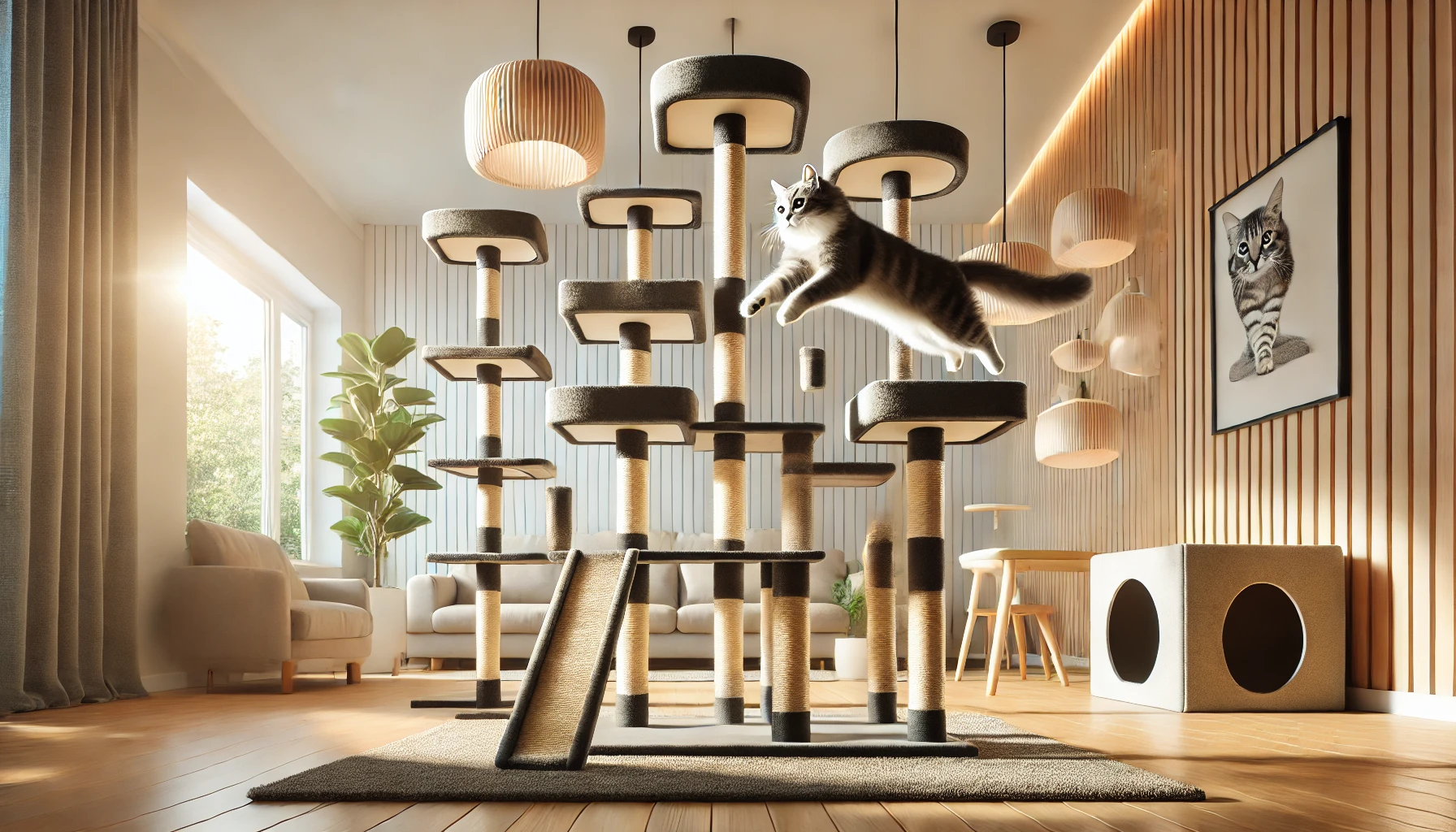
Supporting Physical Health and Fitness
A cat tree provides indoor cats with a chance to exercise and stay active, supporting a healthy weight and muscle tone.
Activities like climbing, jumping across platforms, and stretching keep your cat physically fit, enhancing agility and coordination.
Since regular exercise is crucial for preventing obesity and related health issues, a cat tree becomes a helpful addition to your cat’s fitness routine.
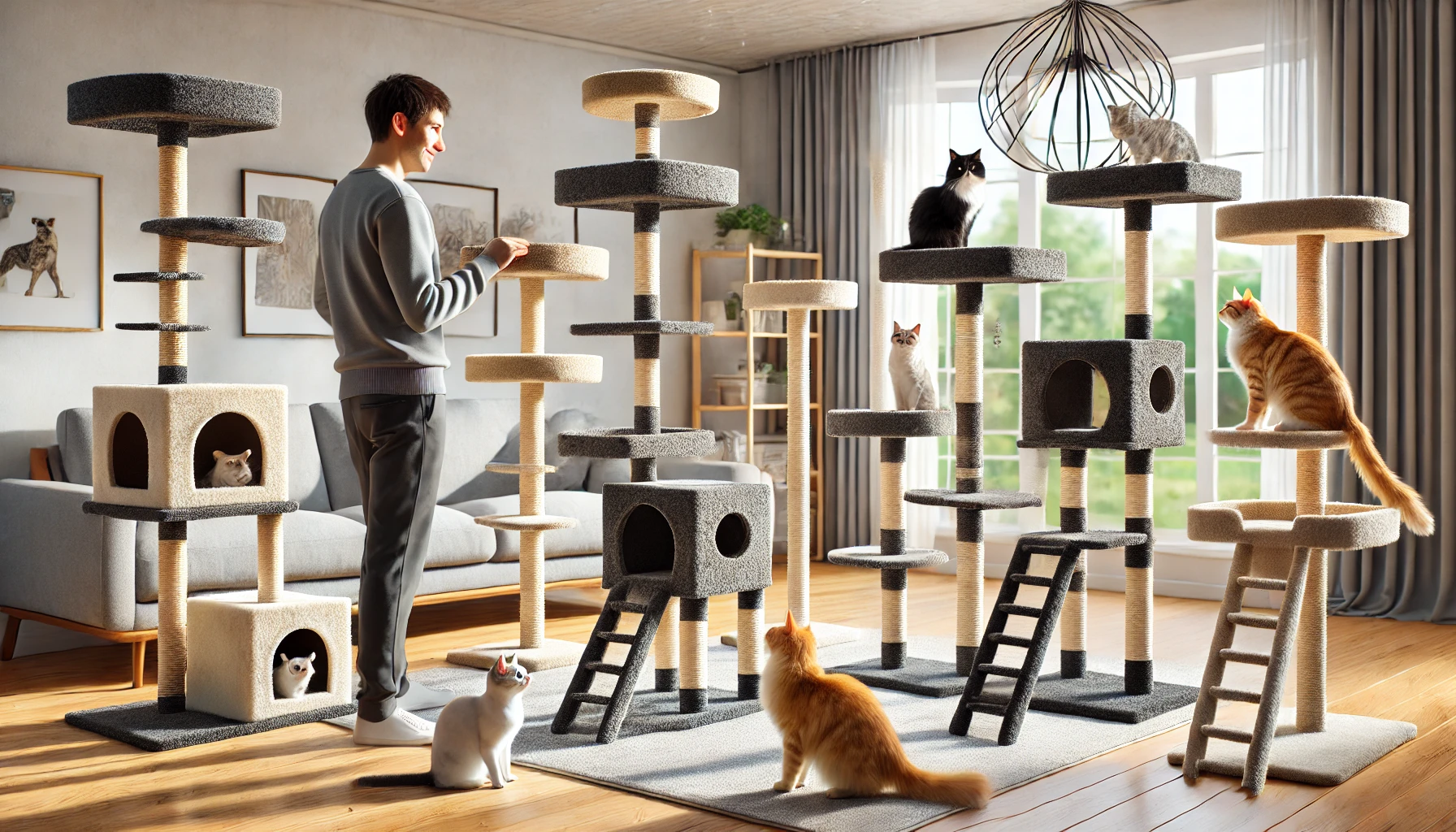
Choosing the Right Cat Tree for Your Home and Cat
No two cat trees are alike, and selecting one that best serves the needs of your feline friend, as well as your home, is essential.
Consider factors like size, material, and stability to choose the best cat tree for your space.
Kittens may be content with a smaller, more accessible tree, while most adult cats love high perches and taller structures.
A well-chosen cat tree enhances both the comfort and safety of your cat.
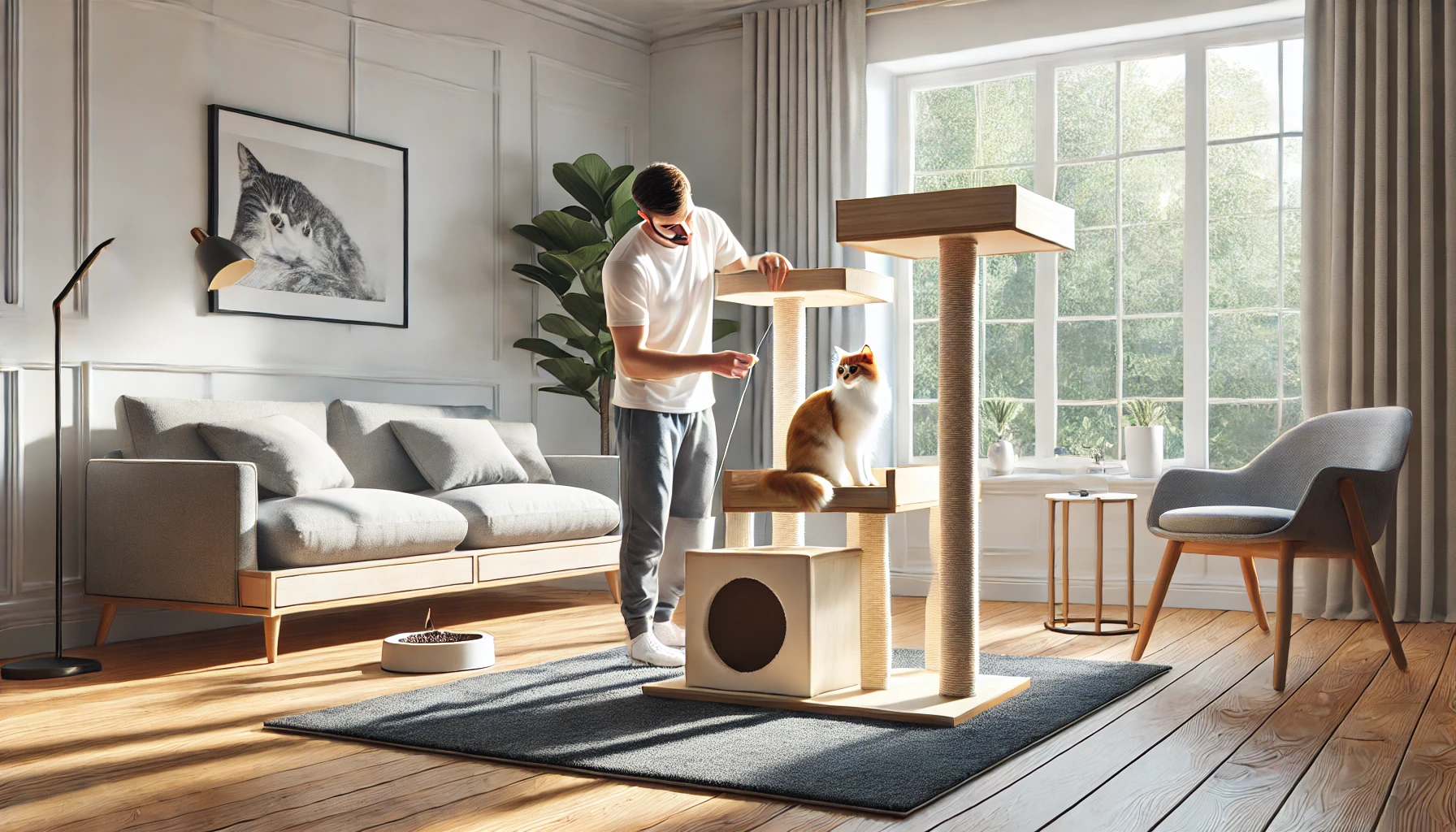
Placement and Maintenance for Long-Term Enjoyment
Placement makes a significant difference in how often your cat uses the cat tree.
Positioning it near windows or in family areas makes it a more inviting and interactive space for your cat.
Regular maintenance, including cleaning, inspecting for wear and tear, and adding accessories, keeps the cat tree safe and enjoyable.
Knowing when to replace a worn-out tree is equally important to ensure your cat’s safety and engagement.
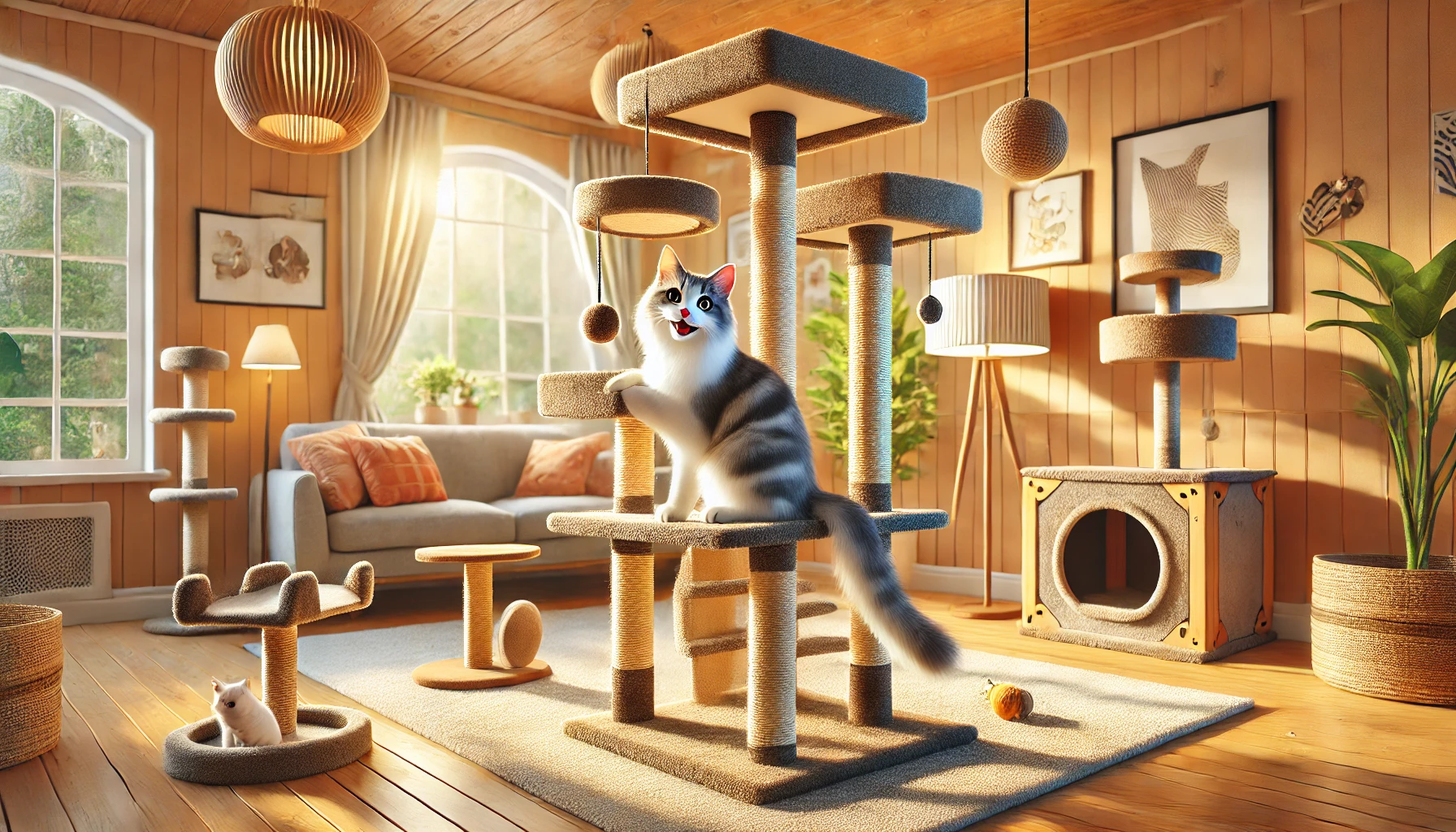
Why Cat Trees Are a Long-Term Investment in Your Cat’s Well-Being
Investing in a quality cat tree yields multiple benefits that enhance your cat’s quality of life.
Beyond being furniture, a cat tree supports your cat’s physical health, satisfies their instinctual behaviors, and provides a place of retreat where they can feel secure and comfortable.
Regular upgrades and replacements make the cat tree a reliable and enriching spot for your cat.
In summary, a cat tree is more than just a play structure; it’s a comprehensive solution that contributes to your cat’s overall well-being.
Whether you are a new cat owner or have years of experience, adding a cat tree to your home will enrich your cat’s life, promote a healthy lifestyle, and strengthen the bond between you and your feline companion.
With the right setup, your cat tree can be a beloved part of your cat’s life, enhancing their quality of life for years to come.
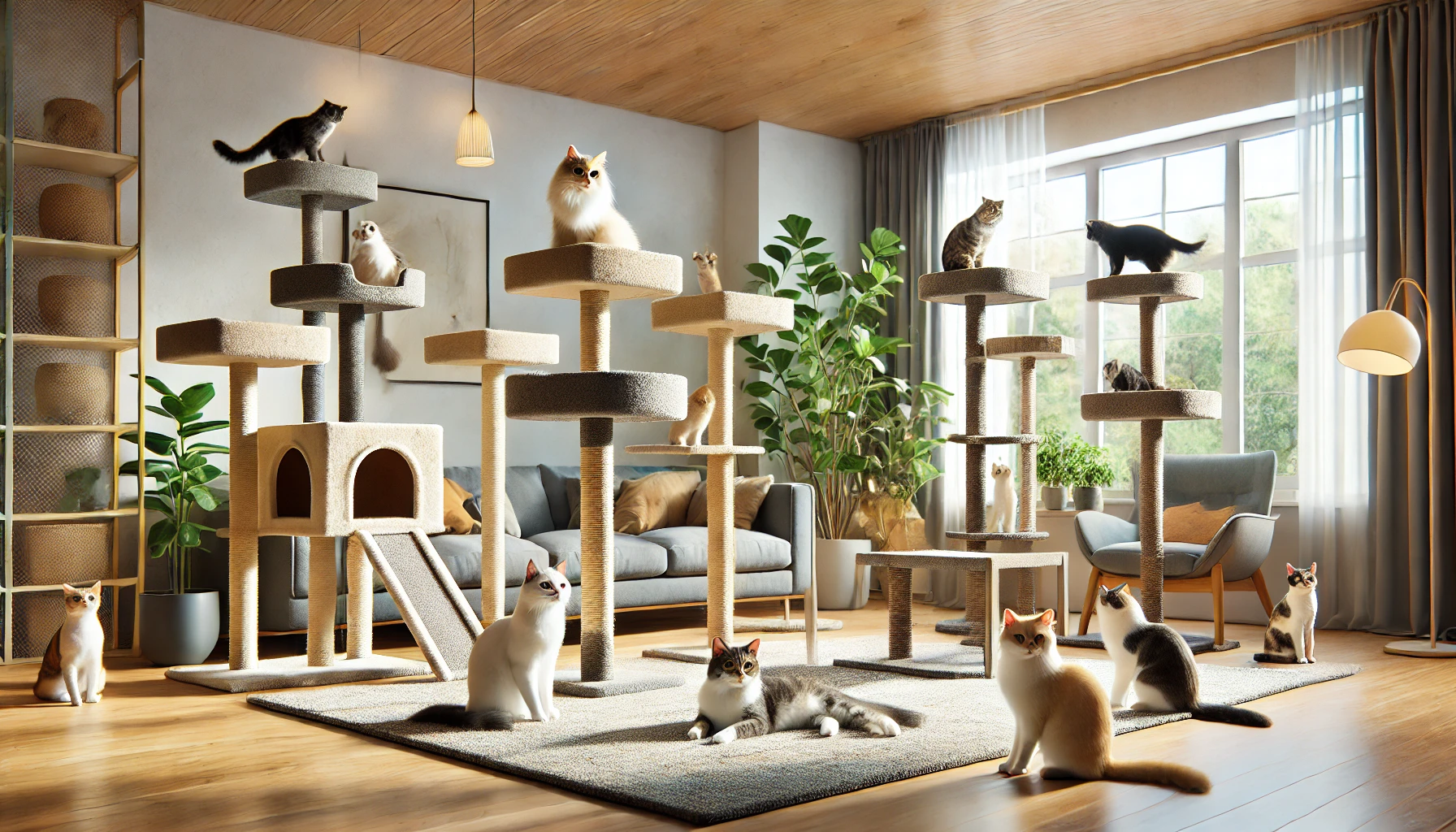
Frequently Asked Questions About Cat Trees
Below are some commonly asked questions about cat trees and how they impact the life of your feline friend.
Setup, maintenance, and everything in between are quickly answered here to help you maximize the benefits of having a cat tree.
Why are cat trees essential for indoor cats?
Cat trees satisfy natural instincts like climbing, scratching, and exploring—all important for keeping indoor cats physically and mentally sound.
They reduce anxiety and prevent destructive behaviors within the home.
How to choose the right cat tree for my cat?
Consider your cat’s age, size, and preferences.
Kittens need accessible trees, while adult cats prefer taller structures with high perches.
Stability and durability are essential for safe, long-term use.
Where should I put my cat tree?
Place it near a window for natural light and views or in family areas.
These locations make the cat tree more appealing and allow your cat to feel involved in household activities.
How often should I clean the cat tree?
Cleaning weekly keeps the environment hygienic.
Vacuum fur and debris, and wipe surfaces with pet-safe cleaners to maintain a fresh-smelling cat tree.
When should I replace a worn-out cat tree?
Replace when the cat tree becomes unstable or too worn for effective scratching.
A new tree ensures your cat’s safety and maintains their interest in their space.
Can I add toys to the cat tree?
Yes, hanging toys like balls or feathers encourage play.
Rotating toys periodically keeps the cat tree interesting and continues to mentally stimulate your cat.
How do cat trees help prevent obesity?
Cat trees encourage essential exercise through climbing, jumping, and stretching.
This activity keeps your cat lean, improves muscle tone, and reduces the risk of obesity-related health issues.
Are there any cat trees designed for multi-cat households?
Yes, multi-cat cat trees feature multiple levels and platforms to support several cats.
Sturdy trees with wide bases allow active play without tipping over.
Can I make a cat tree more comfortable?
Add small blankets or pillows on platforms and hideaways.
These additions make resting areas cozier, increasing comfort and encouraging your cat to use the cat tree more often.

